Natura e Cultura
Tradition, Innovation, and Sustainability

Issue XXXI, Jun - Aug 2023






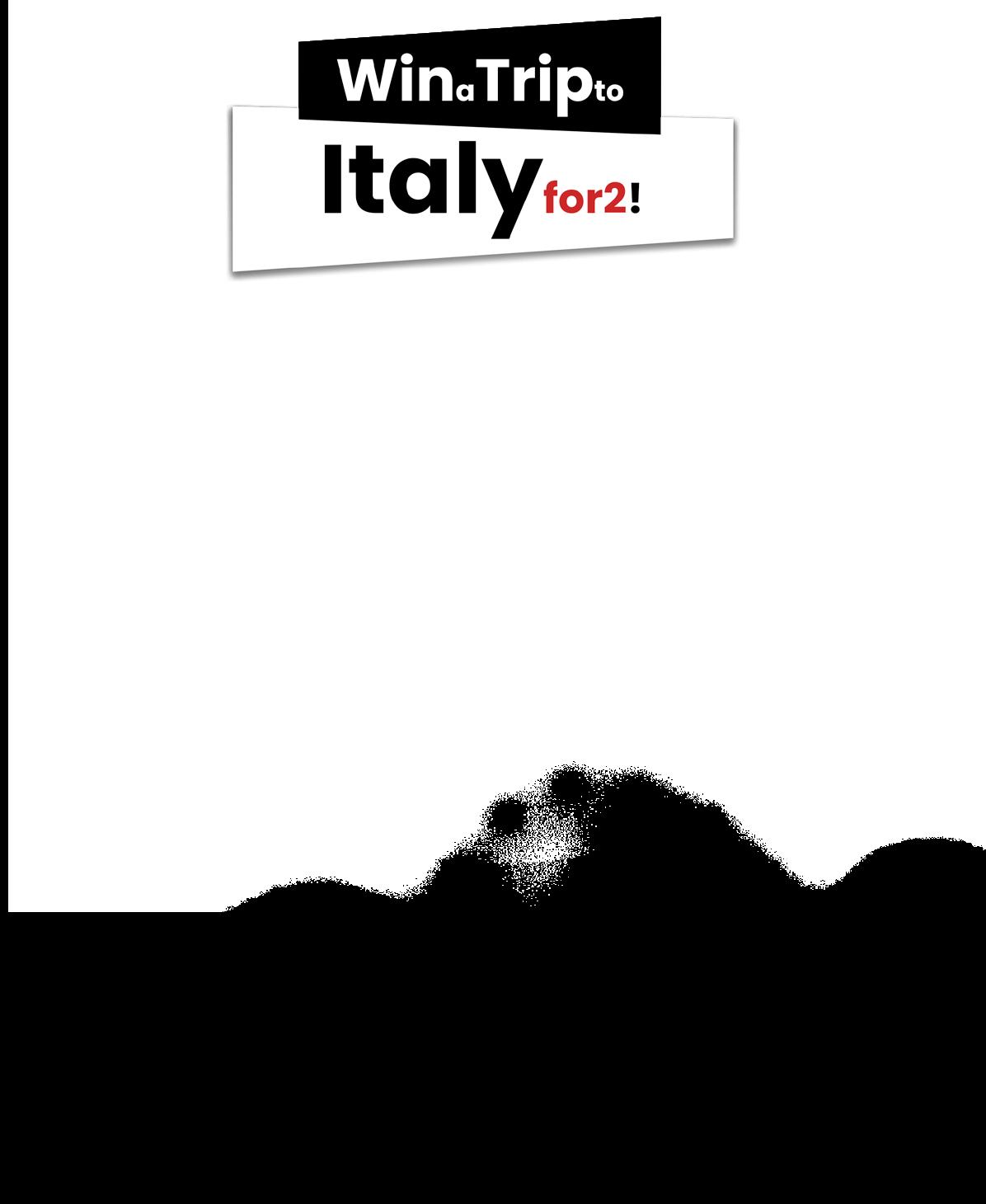





SHARE YOUR BEST PHOTO WEARING SEGMENTO T-SHIRT OR CAP WIN A RETURN TRIP TO ITALY FOR 2! 1 2 3 TO ENTER THE COMPETITION: VISIT SEGMENTO.COM.AU TAKE A PHOTO (OR TWO!) TAG&SHARE ON YOUR PROFILE Choose your favourite t-shirt, cap or tote-bag. Available for shipping worldwide Wearing your favourite t-shirt, cap or tote-bag while visiting a special place or just having fun! Tag @SegmentoMagazine on social media and share your photo on your public profile by 31/12/2023 FCO ROMA SYD SYDNE Y FCO ROMA SYD SYDNE Y Terms&Conditions: The competition ends on 31/12/2023. The Editorial Team at Segmento will select and award “Segmento’s best picture of the year 2023” and will notify the winner by 31/1/2024. The prize consists of two economy class return tickets from anywhere in the world to Rome. Travel period: September to November 2024. Final dates to be agreed with the winner(s). The prizes that may be awarded to the eligible winner(s) are not transferable or redeemable for cash. Other standard terms & conditions apply. Please visit www. segmento.com.au.

Segmento – Unapologetically Italian Issue XXXI • June-August 2023
Cover
Photographer
Peter Brodbeck Model
Federica Mancuso Jewelry Bini Gallery
Contributors to the XXXI Issue of Segmento
Photographers
Peter Brodbeck
Jesper Storgaard Jensen
Julia Martins
Kevin Peterson
Lorenzo Sgalippa
Writers
Lorenza Bini
Nataša Ciabatti
Ambra Dalmasso
Elena Sofia Doria
Christopher Fotheringham
Fulvia Galignani
Jesper Storgaard Jensen
Federica Mancusi
Bruno Mascitelli
Alexine Sammut
Vanessa Sammut
Carla Trigilia
Alberta Vagnoni
Isabella Vagnoni
Publisher
Dr Giovanni Butera segmento@segmento.com.au
Assistant Editor and Translator
Christopher Fotheringham
Graphic Artist
Aurora Delfino design@segmento.com.au
Website & Social media

Ambra Dalmasso & Edoardo Vijge socialmedia@segmento.com.au
Advertising on Segmento +61 410 860 036
For general enquiries and back issues +61 410 860 036 segmento@segmento.com.au
Distribution
AU Melbourne
AU Sydney
AU Perth
AU Adelaide
AU Brisbane
AU Canberra

AU Cairns
CN Beijing
JP Tokyo
NZ Auckland
SIN Singapore
Subscription www.segmento.com.au/signup-page segmento@segmento.com.au
Segmento Pty Ltd

203 Maribyrnong Road, Ascot Vale 3032
Victoria Australia
Segmento acknowledges the traditional owners of the lands on which this publication was prepared and published. We pay our respects to Traditional Elders past and present. We pay respect to the age old traditions of all indigenous people.

segmentomagazine @segmento_magazine
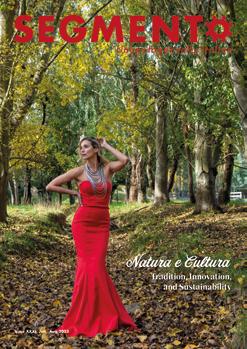
Segmento proudly supports
The UN Refugee Agency is dedicated to saving lives, protecting rights and building a better future for refugees, forcibly displaced communities and stateless people. For donations please contact partnershipssg@unhcr.org
EverGreening focuses on massive land restoration efforts to address food insecurity, rural poverty, climate change and land degradation. For donations please visit www.donorbox.org/green-up-to-cool-down
Disclaimer: The Editorial Staff ensures that all details are correct at the time of printing, however the publisher accepts no responsability for errors or innaccuracies.









EMAIL segmento@segmento.com.au | PHONE +61 410 860 036 Subscribe For lovers of all things Italian XXV, Dec 2021-Feb 2022 Love, Art, Power and Divine Inspiration Issue XXVII, Jun-Aug 2022 in a Global World of Change Identity and Belonging Issue XXVIII, Sep-Nov 2022 THE MANY SHAPES OF BEAUTY La Bellezza XXIX, Dec 2022 Feb War ... or Peace?
Join us at ACMI for the Premier Screening of the 2023 Multicultural Film Festival and be uplifted and challenged by powerful and thoughtprovoking films that explore diversity and multiculturalism.




Follow us on or check out our website for details.
Tickets are on sale in early June!

The editorial process, naturally, is one of selection, curation, and interpretation, but a thread ran through the articles. It is a thread that has been niggling at our collective consciousness for some time now and finds expression in the work of our unapologetic authors. It is a dissatisfaction with the status quo, where our culture now finds itself, and the exploitative nature of our relationship with the earth and the people with whom we share it.
Recently Rome and Florence have been the victims of attacks by young people targeting some of those cities’ most important architectural and artistic symbols. Following the vandalisation of the Palazzo Vecchio, the Mayor of Florence described the event as an “attack on art, culture, and beauty.” At least as far as we at Segmento are concerned, that these gestures are futile and misguided is beyond question. However, this destructive impulse gives us cause to think about the challenges of our times. This is not the symptom of a culture that has lost faith in its totems. If the monuments and symbols attacked had no meaning, there would be no sense in attacking them. Christian fanatics no longer deface and topple the statues of pagan gods now that they live mutely in museums and their temples lie in ruins. The almost universal condemnation directed against these young “barbarians” does not speak of a civilization that no longer cares for its culture. Italy is a land marked by the vestiges of its history. Symbols remain intact from every period in the country’s long history. In the Italian
mind, a charming patina of age, even if bordering on outright neglect, is still preferable to an aggressive renovation. The environmental crisis and the ravages of unbridled capitalism call us to reimagine our future not just by embracing the new but by looking backwards to a time when people were closer to nature and, indeed, closer to other people. With an immense rural heritage still intact alongside its advanced hi-tech economy, how can Italy contribute to a genuine positive revolution for a sustainable future not in a spirit of atavism but with hope and optimism?
In this issue of Segmento, we share stories about valorizing tradition and nature as a way forward. The issue offers a glimpse into alternative lifestyles and guides readers towards a more sustainable form of tourism by exploring the marginal and the rural. We interview people performing new readings of classic authors, leading the way in putting culture and education in pride of place. We write about indivduals who have drawn on the past to explore new and exciting possibilities in art, cinema, design, music, and cuisine, craving for an authentic earthy culture and genuine human connections that are quickly being eroded in this age of digital consumerism.
Buona lettura!
Christopher Fotheringham

7
Editorial
Segmento Issue XXXI • Jun - Aug 2023




8 Segmento Issue XXXI • Jun - Aug 2023 CONTENTS Bringing Italian Language and Culture to the World by Christopher Fotheringham Mapping the Landscape with Music by Fulvia Galignani ART & CULTURE Alfio Antico by Nataša Ciabatti A Window onto the Drawing Room of Italy by Carla Trigilia Il Coraggio di Essere se Stessi by Nataša Ciabatti 10 14 18 14 18 21 24 GLOBAL & SOCIAL ENGAGEMENT Editorial Viva Voce A Tavola Under the Cover The Unapologetics Alla Scoperta 7 28 58 71 77 78 10 21





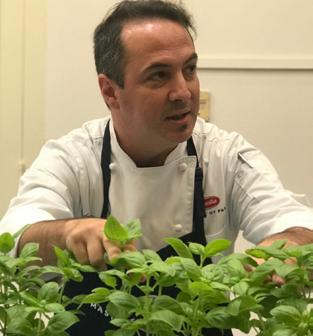
9 31 34 36 FASHION & DESIGN From Junk to Jewelry by Lorenza Bini Ettore Sottsass by
Sammut Tip Your Hat to Borsalino by Federica Mancusi Segmento Issue XXXI • Jun - Aug 2023 BUSINESS & INNOVATION The Fight for Sustainability
The Impact of the War in Ukraine on the Italian Economy
Revolutionising Italian Agriculture
Vanessa Sammut 61 64 66 31 45 58 34 61 51 51 53 55 CUISINE & FOOD Andrea Tranchero and his Culinary Triumphs
of Life
Piece of Bread
TOURISM & PLACES Peripheral Poetry
Negative Influencers
Rugged Italy by Elena Sofia Doria 39 43 45
Alexine
by Vanessa Sammut
by Bruno Mascitelli
by
by Ambra Dalmasso Quality
in a
by Jesper Storgaard Jensen Preserving a Central Italian legacy by Isabella Vagnoni
by Jesper Storgaard Jensen
by Edoardo Vijge
BRINGING ITALIAN LANGUAGE AND CULTURE TO THE WORLD A FORMER CONSUL GENERAL TAKES ON A NEW CHALLENGE
The former Consul General of Italy to Melbourne, Marco Maria Cerbo, spoke to Segmento about his new role in promoting the Italian language and culture abroad as the Head of the Italian Training and Education System in the World.
When did your diplomatic career start?
I joined the Ministry of Foreign Affairs in 1999, and the journey has been very rewarding. Working as a diplomat offers diverse experiences. I have monitored elections in remote regions of Ethiopia, discussed industrial investments with Hong Kong tycoons, negotiated joint ministerial statements about the war in Ukraine at the Paris talks
in 2022, and served an incredibly active community as Consul General in Melbourne.
Do you recall any particular experiences as a Consul in Australia?
One of the results obtained in Australia that I am most proud of was sponsoring the creation of the first bilingual school in Victoria–maybe it was a taste of things to come in my future career!

10
GLOBAL & SOCIAL ENGAGEMENT
Interview by Christopher Fotheringham | Images provided by Marco Maria Cerbo
Segmento Issue XXXI • Jun - Aug 2023
Italian National Day at the Veneto Club in Melbourne (2014)
What are your responsibilities in your current role as Head of the Italian Training and Education System in the world at the Italian Ministry of Foreign Affairs, and what is the mission of this role?
The Italian Training and Education System in the World is an international network composed of seven Italian state schools, 45 Italian state-recognized private schools, 92 Italian sections in foreign, international, and European Schools, 130 Italian lecturers in foreign universities, and more than 10,000 courses, organized by private, non-profit bodies. In 2021 there were 302,799 students registered in the network. On the one hand, our main responsibilities are related to the administrative and financial management of this network, as well as selecting and training Italian school personnel, including teachers and lecturers. On the other hand, the purpose of the network is to promote the Italian educational model and the Italian language and culture abroad through cultural diplomacy, educational projects, and communication.
Do you have any personal ambitions for your time in this role?
Having the responsibility of promoting our culture and language abroad can be challenging. Unfortunately, daily managerial issues often overshadow strategic ones. In the longer term, I would be satisfied if I managed to improve the functioning of the system through some regulatory reforms and, at the same time,
advance the status of Italian schools outside Italy, making them more and more appealing for students and families who don’t have already a connection with Italy but appreciate what we have to offer in terms of education.

11 GLOBAL & SOCIAL ENGAGEMENT
Segmento Issue XXXI • Jun - Aug 2023
Welcoming the Italian Prime Minister Mario Draghi to Paris (2022)
Are you working on any projects you are particularly proud of?
It’s always hard to answer questions like this, but I’ll try. Let me mention a couple of programs. The first one is aimed at digitalizing a large amount of our work and the first tangible result was moving selection procedures for teachers to be sent abroad online. The second was the attempt to link our various promotional activities involving students. For example, some students are now competing to draft a short story about Corto Maltese, a famous comic book character. At the same time, our schools have been invited to participate in the 2023 edition of Italian Language Week (ILW) with student comics on the theme of sustainability, which will be held in autumn. To create a connection, the comics based on the winning draft will be shipped to Antarctica during ILW: a symbolic gesture to mark our educational system’s commitment to the environment and our vocation of going beyond borders.
The existence of your role, among many other things, indicates that the Italian government is extremely engaged with its diaspora as compared with other countries. How and why does the Italian state leverage the diaspora as a strategic asset?

There are almost six million Italians abroad. This is about one-tenth the population of Italy. There are millions more who can claim an Italian background. In Australia alone, in the 2021 Census, over a million people claimed Italian ancestry.
I would define the diaspora as an intrinsic component of Italian society rather than an asset. Italians abroad regularly engage in the social, economic, and political life of their country of origin, in particular since 2001, when they were given the right to vote outside Italy. Having large and thriving communities in many different countries means that Italy can count on allies to create international ties and that Italians can find a friendly interlocutor nearly anywhere.
How specifically does language training contribute to this?
Of course, keeping our language alive in foreign countries is instrumental to boosting bilateral relations, both by maintaining the link between the diaspora and Italy and creating interest among those who are not of Italian descent.
On the topic of students of Italian with no Italian heritage, how do you explain a small language like Italian
12 Segmento Issue XXXI • Jun - Aug 2023
GLOBAL & SOCIAL ENGAGEMENT
Launching of a new model of Maserati in Hong Kong (2005)
remaining so popular as a foreign language?


Let me correct you: Italian is not a small language. People who speak Italian as their first or second language number nearly 100 million worldwide; Italian is the lingua franca in specific domains (e.g., art, humanities, music) and within the Catholic Church. Moreover, it is an important business tool. As a G7 economy, Italy relies on a backbone of small and medium enterprises, so speaking Italian means having a fast track to a very important marketplace. The efforts put in place in our promotional activities also count. Thanks to an extensive network that includes 84 cultural institutes and, as I mentioned before, 52 schools, joined by several other institutions, including those established by former migrants, committed to the same common goals. Last but not least, Italian culture is appreciated
everywhere, both in its popular forms (everybody likes pizza) and its high expressions, with an artistic and literary heritage ranging from Dante Alighieri to Lucio Fontana.
13 Segmento Issue XXXI • Jun - Aug 2023
GLOBAL & SOCIAL ENGAGEMENT
Restitution of the Obelisk of Axum to Ethiopia (2005)
Lecturing about multilateral diplomacy with international students, Paris (2023)
MAPPING THE LANDSCAPE WITH MUSIC

A QUEST FOR BELONGING IN THE FOOTSTEPS OF SOME INSPIRING WOMEN
by Fulvia Galignani | Images provided by Ilaria Crociani
Segmento interviewed Australian-Italian singer Ilaria Crociani about her new album Connecting the Dots and the remarkable women who inspired it. The singer-songwriter opened up about loneliness, belonging, and finding strength in the stories of others.
Ilistened to Ilaria’s album before I read all the reviews, and I could not stop listening to it for days after my interview with Ilaria. Connecting the Dots , like T.S. Eliot’s The Wasteland , can be likened to a landscape. Through this landscape winds a path that may reach water, whatever this represents. Ilaria’s voice flows with a crystalline quality telling the stories of the women who crossed this land.
The first question I ask Ilaria concerns her own statement about the album: “…thinking you are alone in the most difficult moments is the biggest mistake one can make.” I asked her to explain this loneliness and the encounters she has had.
The experience of immigration is not simple for anybody. A while ago, I had strong doubts about it and questioned
14 Segmento Issue XXXI • Jun - Aug 2023
GLOBAL & SOCIAL ENGAGEMENT
Ilaria Crociani
my life. In a nutshell, I felt lonely and missed true, meaningful relationships with my closest friends. When meeting these female characters, who later became the album’s protagonists, I understood that everyone feels this way, irrespective of whether they have migrated. I felt comforted and inspired by the adventures and misadventures of these women. Sometimes we feel embarrassed when expressing vulnerability and insecurity in a world which expects us to appear strong and successful. Or, more than that, there is the incapacity to experience a sense of belonging. This is hard to accept, even though I have been here for ten years.
Which of these women did you encounter first?
Minnie Berrington, the protagonist of the song “Stones of Fire”, whose life I learnt about thanks to a BBC documentary set in Australia. After watching it, I borrowed a book from the library and read it overnight. Minnie was the first woman who became an opal prospector. She was a typist from London who came here before the First World War and fell in love with the desert.
Is there a female character you identify with more than the others in this moment of your life?
Good question. I found commonalities in all these women. I was deeply interested and moved by Gina Sinozich’s story. I even managed to speak with her son. I am a lawyer specializing in refugee rights, and I was struck when I found

out what happened to Italians who lived in the colonies when the Second World War broke out. Gina, who came from the Italian colony of Istria, had to return to Italy as a refugee during the war. However, this was only a temporary and rather unhappy parenthesis for her. Later she managed to get on a boat and arrive in Australia with her husband and son. She is the one I feel the closest to. I am 50; I have always made music, but it was here that music became a vocation. Gina gave voice to her personal experience the moment she lost her husband. Like me, she gave herself to art without ambition, in the most authentic way, out of personal necessity.
You found redemption through music in much the same way as the protagonists of your songs find redemption through art. Is that correct?
Yes, I have worked several jobs, but I feel best when singing. It is the fire which fuels and feeds me. With my first band, Radiosuccessi , I delivered an aspect of Italian music that the audience here was eager to understand and enjoy.
What was the creative process behind this album?
I hate doing the housework, especially cooking; my head needs distractions, so I take a piece of paper and jot something down while doing my chores. Music is a strange alchemy, sometimes melodies come to my mind, and I need to record
15 Segmento Issue XXXI • Jun - Aug 2023
GLOBAL & SOCIAL ENGAGEMENT
them on my phone using an app. Making music is a non-structured, almost biological process for me. I was given a ukulele as a gift. I play it, sometimes I find chords I like, sing over them, and my little songs come out. For the album, I happened to be working on some lyrics. Once they were well elaborated and felt complete, I asked the musicians in my band if they had any music ready. I was looking for a natural association, matching words and music without altering anything. While my husband (Mirko Guerrini, saxophonist) is a romantic, a Puccini lover, almost languid in his style, I was surprised that my lyrics matched so well with the rhythmic style of my drummer, Niko Schauble. For instance, for “Musicali Aspetti”, which is about the friendship between two female composers of the Baroque Age, Barbara Strozzi and Isabella Leonarda, I found that the music Niko had sent me had an antique flavor, a faraway echo,
even though it was composed in 2010. It was perfect for my lyrics.
What brought you to your choice of the title of your album, Connecting the Dots?
There are two aspects here: connecting the interior dots, which link us to ourselves, and the external dots, that connect us to others. If we read between the lines of other people's lives and listen carefully to their stories, we realise we are always in front of ourselves too. Truly engaging with other people allows us to connect the dots and realise we are all very similar.
Everyone we meet leaves us with something, influences us, and shapes us somehow. There is osmosis between ourselves and others. My album invites us not to let ourselves go but to stay grounded in these examples of characters who can teach us to find a way back to simplicity and trust.
As I listened to the album, the element of land was pervasive for me. Is that just me, or is there something to that?
That is interesting! At my last concert, a woman approached me and told me she was born in the Australian outback and recognised herself in the songs and the genuine and simplistic landscape they evoke. To a certain degree, it reminds me of our Sicilian outback in the Trapani region.

And, once again, some more dots are

16 Segmento Issue XXXI • Jun - Aug 2023
GLOBAL & SOCIAL ENGAGEMENT
Extasy Morricone: Ilaria and her band
The International Specialised Skills Institute

Direct action to build a better skilled Australia
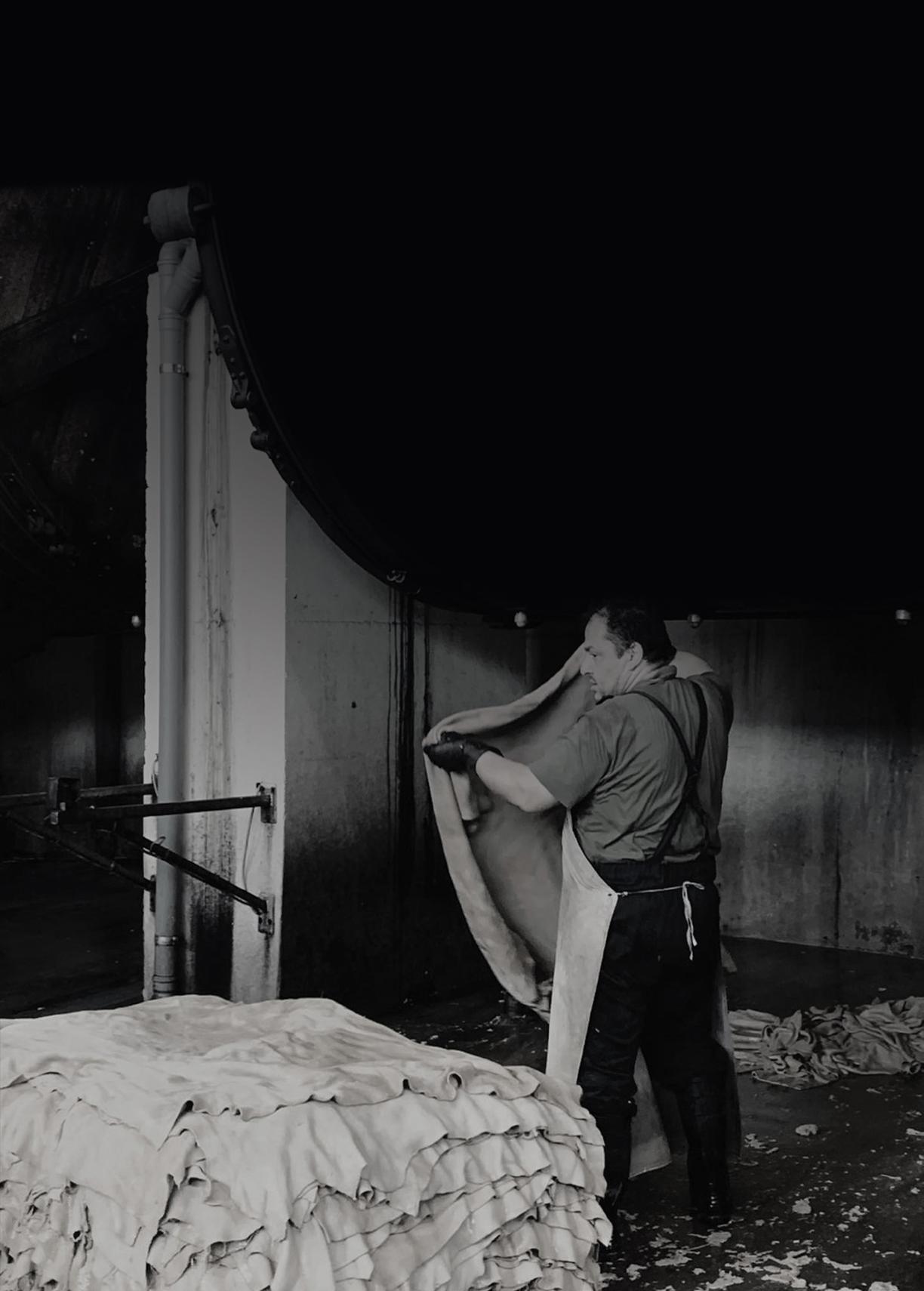
The International Specialised Skills Institute (ISS Institute) exists to develop an innovative, skilled, and smart Australia by cultivating the mastery and knowledge of talented Australians through international applied research (i.e., industry-based) Fellowships.
www.issinstitute.org.au

The ISS Institute is a registered charity. All donations are fully tax deductible and go directly to fund Fellowships and education programs for
Fellows.
Picture credit: Amy Franz, Italian Australian Foundation Fellow 2021
ALFIO ANTICO INNOVATION ROOTED IN TRADITION
by Nataša Ciabatti | Photography by Julia Martins
Segmento interviewed enigmatic Italian singer-songwriter, musician, and theater actor Alfio Antico, widely regarded as one of the world’s leading interpreters of the tammorra and frame drum.
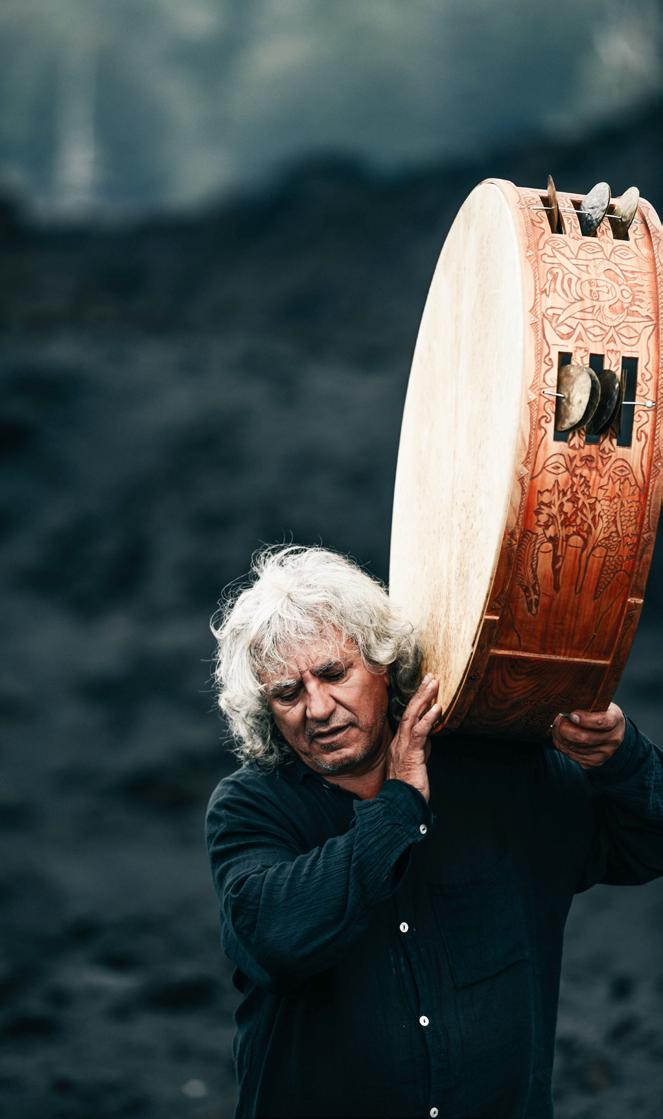
Iwas left speechless when I saw Alfio Antico play live in concert. It is impossible to describe the emotions he transmits through his incredible drumming technique. Alfio’s virtuoso playing style, innovative improvisations, and use of vocalizations have made him famous internationally.
When we met, he spoke of how he began playing the tammorra at a young age and how he became the world master of this instrument. The tammorra is a large frame drum that is commonly used in Southern Italian music. It is played with a combination of hands and fingers, and the player typically uses various techniques to produce different sounds and rhythms. My grandmother passed on her love for the drum; she used it to distract me from the pain when my father got ill. I was five years old when I saw the drum being played, and I knew where the skin for the drum had come from–I knew the lamb. That is how I learned about skins. Lamb, goat, and kid skin have very different sounds. I consider myself respectful of nature, animals, the land, and the grasses. These days, when I buy a skin, I know the animal, and I mount it on the drum very carefully. I know how to take care of it. The language I draw from its sound transports me to that nature, observation, understanding, and knowledge. So, to this day, the drum is still my most sincere friend. It lets me talk and even taught me
18 Segmento Issue XXXI • Jun - Aug 2023 ART & CULTURE
Alfio Antico
how to read and write. I was lucky because I have always believed in myself and what I do as a musician.
Alfio agreed that his music is impossible to describe in words, but I wondered, could his style be taught to others?
The technique could be taught, but the love has to grow. Playing the drum is a question of sensibility and love, not just technique. I can teach you how to play an instrument, like someone who has studied guitar for ten years at a conservatory. After ten years of study, you know how to play the instrument, but it is up to you to get the most out of it.
While we spoke, Alfio retraced his career, from growing up with the sounds of traditional Southern Italian folk music to when he was discovered by Eugenio Bennato, from his collaboration with Fabrizio De André who wanted his “thumb” for Crêuza de mä , to his psychedelic record with Mario Conte and Colapesce. A deep folk tradition and a rustic mysticism give his music power. Despite his fame and success, he must return to his roots to recharge.
I take pleasure in performing, be it tarantella or electronic music. I am happy because all sorts of people from all over the world invite me to play. However, when I am away
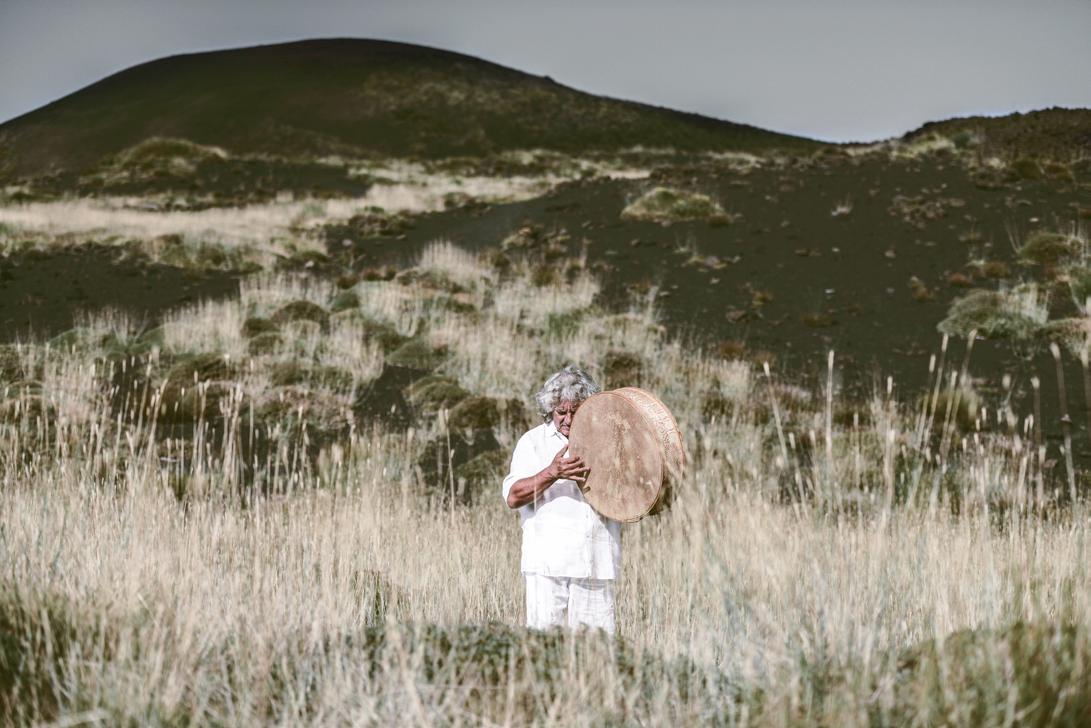
19 Segmento Issue XXXI • Jun - Aug 2023 ART & CULTURE
from the life of sheep herding in the mountains, I realize I miss it. It has not always been easy–there was a moment when I wanted to get away from that world. I was ashamed of even talking about it. From when I met Eugenio Bennato–you could say he discovered me–I started being successful and traveling. I saw cities and fell in love instantly. When I achieved global success, I became disconnected from nature. The flights, fancy hotels, restaurants, and entourage that followed me while on tour frightened me as much as it excited me.
Alfio’s music comes from a folk tradition as old as time. However, for him, tradition is not about standing still or going backwards. It is a starting point for experimentation with new approaches to composition within the organic parameters of his instrument and sensibility.


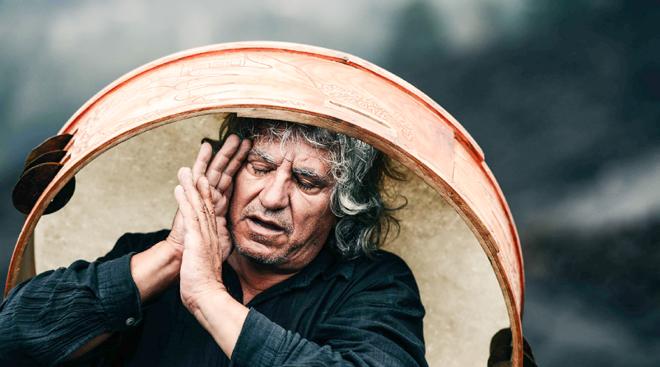
I’ve never understood what tradition is. Perhaps we create traditions, respecting what we love and–as my mother said–remembering where we come from, who created us, and the “tongue that taught us to eat.” These are words that have always stayed with me. My maternal family was full of musicians; I feel part of this lineage. I am one with the drum. I always say I create drums, and drums create me.
Alfio’s music cannot be put into words, but for a once-in-a-lifetime experience, do not miss a live performance of this mostro del tamburo!
20 Segmento Issue XXXI • Jun - Aug 2023 ART & CULTURE
A WINDOW ONTO THE DRAWING ROOM OF ITALY RECONNECTING WITH HIS ROOTS, GIUSEPPE PICCIONI TURNS CINEMA INTO POETRY
by Carla Trigilia |
Images provided by Giuseppe Piccioni
Italian film director Giuseppe Piccioni chose to return to his roots and reconnect with his hometown in his latest masterpiece, The Shadow of the Day (L’ombra del Giorno), completely filmed in the city of Ascoli Piceno, Le Marche.
Giuseppe Piccioni has directed 11 movies since 1987 and is among the most celebrated contemporary Italian directors. Thirtyfive years after shooting his first film, Il grande Blek in Ascoli Piceno, Piccioni returns to his hometown, which, in this latest film, becomes the protagonist.
The Shadow of the Day is about life in provincial Italy after the promulgation of Mussolini’s racial laws in 1938. Luciano is a restaurateur who believes in the promises of fascism but, nonetheless, thinks he can still live by his own rules inside his business. However, everything changes when Anna, a girl with a dangerous secret, starts working at his restaurant.
Piccioni’s film is a troubled love story set against the backdrop of the fear, distrust, and claustrophobia of the fascist era. Love stories in cinema must always deal with obstacles; the more obstacles they have, the more compelling they are. In my film, I captured the changes during the tumultuous period of fascism. In that era, the founding principles of civil coexistence and democracy, such as, for example, the free exchange of opinions and the right to express personal thoughts, were challenged and questioned.
Piccioni firmly believes that love is a feeling that cannot be controlled, but during the
fascist regime, even the most basic human feelings were filtered through the lens of state ideology. As Piccioni confirmed: Showing the feeling of love in my last movie was complicated. I wanted to represent two different sides of the same coin: experiencing the joys of love in a difficult time. On the one hand, it was getting hard to feel free to express ideas, opinions, and feelings other than those of the fascist regime. On the other hand, the seemingly good-natured face of fascism in a provincial town began to show its cracks with the introduction of racial laws.
Most of the movie takes place inside the famous Cafè Meletti in the main square of

21 Segmento Issue XXXI • Jun - Aug 2023
ART & CULTURE
Riccardo Scamarcio (Luciano) and Benedetta Porcaroli (Anna)
Ascoli Piceno, Piazza del Popolo. Piccioni transformed the café into a restaurant to film the core scenes. The restaurant’s window becomes the undisputed star of the movie, along with the main actors, Riccardo Scamarcio and Benedetta Porcaroli. Through that window, life flows, and fascism becomes more and more entrenched in the existence of the small town. Despite this, the protagonist never completely bends to the regime and remains, almost paradoxically, a symbol of anti-fascism and, thus, of tolerance. In this regard, Piccioni commented:
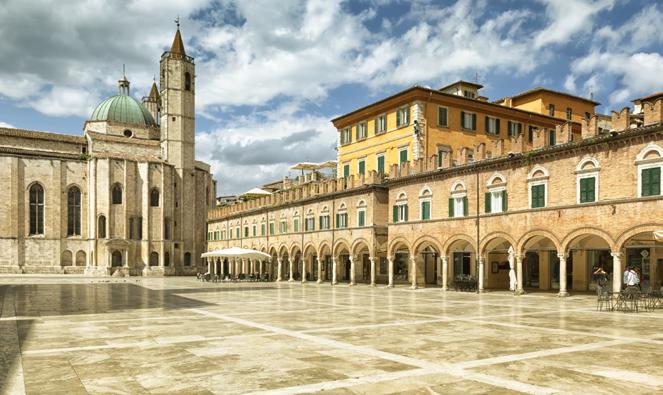
The movie’s main male character, Luciano, has always looked out the window of his restaurant with some indulgence because he is a “sui generis” fascist. He wants to live quietly and believes that fascism could bring something good. Luciano’s idea of the world begins to waver when a girl from that
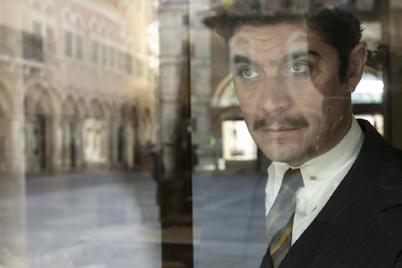
storefront asks for a job and brings a secret that will unhinge his world. He has something that makes him different from the fascists–he does not want to get ahead; he is content to work at the restaurant and live quietly.
The Shadow of the Day deals with several themes–love, racial hatred, fear, courage, and death, but it does so with extraordinary delicacy, never relying on shock value. There is never discomfort or excess. Piccioni says:
I have never been inclined to flashy effects or to shock the spectator. On the surface, the narrative seems to be carried out with simplicity, but that simplicity is actually the result of careful choices in the dialogue, the use of space, and the way of working with the actors. Making choices means getting to the end of the film with as few regrets as possible. Even the choice to adopt a linear and classic staging results from a lot of work and effort.
22 Segmento Issue XXXI • Jun - Aug 2023
ART & CULTURE
Riccardo Scamarcio (Luciano)
Piazza del Popolo, Ascoli Piceno
The town of Ascoli Piceno itself, with its main square, often called il salotto d’Italia (the drawing room of Italy) on account of its gracious but intimate character, could be considered the leading role in The Shadow of the Day. As the film’s name suggests, the picturesque town has a shadow hanging over it, but it remains a feast for the eyes on the big screen. The director commented on Italy as a backdrop for cinema:
Italian cinema has an important role in helping to show the beauty of offthe-beaten-track places. I think this film does that beautifully. Choosing Ascoli Piceno as the filming location was a deliberate choice. I can firmly say that this town is one of the movie’s protagonists thanks to its unseen beauty and elegant and magnificent square that has meaning in the story. As Italians, we should never forget where we come from, from the Renaissance, for example. The beauty of this country’s architecture, painting, and art is stunning!
At the end of the interview, I asked Giuseppe Piccioni what his favorite of his own movies is:
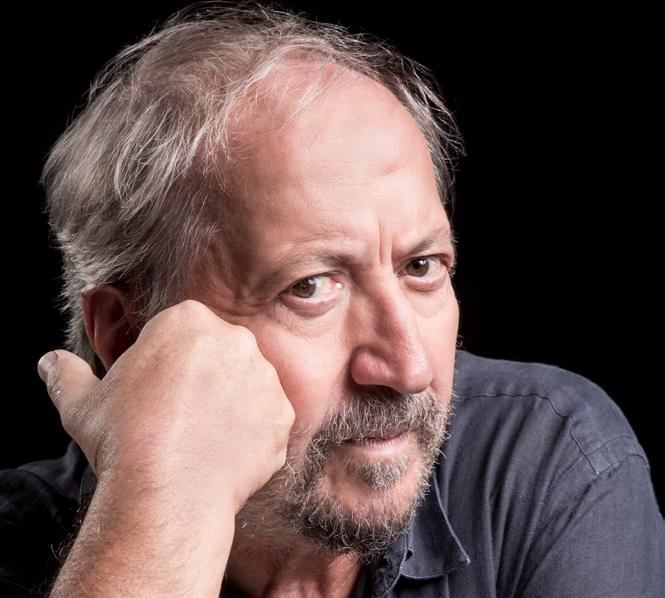

Most people probably know me for Fuori dal Mondo ( Not of This World , 1999) with Margherita Bui and Silvio Orlando. However, I always love the last movie I did last because it is under my skin. Generally speaking, I would say that all of my films represent me perfectly, for better or worse!
Piccioni confirmed that he is working on a new movie and has already started writing the script. We are confident that this new movie will be as beautiful as the rest of his oeuvre, so we just have to wait patiently while enjoying his other masterpieces.
23 Segmento Issue XXXI • Jun - Aug 2023 ART & CULTURE
Giuseppe Piccioni
IL CORAGGIO DI ESSERE SE STESSI FOR THE LOVE OF ART, EDUCATION, AND FREEDOM
by
Nataša Ciabatti
| Images provided by Maria Laura
Chiaretti
Segmento caught up with Maria Laura Chiaretti, author of Il coraggio di essere se stessi, a new book exploring Pier Paolo Pasolini’s life through the lens of pedagogy. Here, Pasolini is cast as a role model for future generations.

24 Segmento Issue XXXI • Jun - Aug 2023 ART & CULTURE
Maria Laura Chiaretti with her book, Il coraggio di essere se stessi
Pier Paolo Pasolini (1922–1975) is considered one of the greatest Italian intellectuals of the 20th century. He published around 25 anthologies of poems and 15 novels, produced close to 30 screenplays, directed 15 theater pieces, directed 13 films, and wrote countless essays. Less well-known is Pasolini’s interest in pedagogy. “When Pasolini was assassinated, a copy of Nietzche’s book On the Future of Our Educational Institutions was found on the back seat of his car, evidencing the importance he placed on pedagogy throughout his life,” explains Maria Laura Chiaretti, author of a new book on the life of Pasolini, published by Armando Editore. Her debut book is a detailed and comprehensive study, the fruit of a mind that is “in love with rebellious thought, critical poetry, and political engagement,” as celebrated poet Dacia Mariani describes in the preface. According to Maria Laura, all of Pasolini’s artistic and literary endeavors responded to a higher calling—educating future generations as the only way to envision a better future.

“They teach you not to shine, but you shine nevertheless, wrote Pasolini to his imaginary student Genariello in his unfinished treatise on pedagogy. I experienced the same thing with this book. I persevered in the face of those who rejected my ideas,” explains Maria Laura, who published this impressive biography of the Italian intellectual giant at only 26
Smiling, she went on to say:
This famous quote by Pasolini best represents his passion for teaching, his love for humanity, and his admonitions of institutions that put children into boxes and punish them for dreaming. Following this advice, I contacted Dacia Mariani, Pasolini’s last living personal contact. She knew him personally as a friend and worked with him. I never dreamt she would bother to read my manuscript, but she did and liked it, so the gamble paid off.

25 Segmento Issue XXXI • Jun - Aug 2023 ART & CULTURE
The value of this book for contemporary readers is that it reflects on the importance of diversity in education. What can difference teach us? Everything! In encountering the Other, we come to understand ourselves. Pasolini also taught the value of defeat and resistance in the face of adversity. Pasolini as a teacher is perhaps the least known facet of the Italian intellectual most famous for his poems and films. But poetry and cinema were essentially educational instruments for Pasolini. His films are unfiltered; they are democratic interventions aimed at raising consciousness and encouraging divergent thinking.
Il coraggio di essere se stessi highlights Pasolini’s ability to bridge different artistic mediums, “high” culture and popular culture, standard Italian and the dialects, the past and the future. “Pasolini transfixes your soul,” says the young author whose debut book has already merited a special mention in the 14th edition of the Grottamare Literary Competition.

Pasolini’s themes are topical and universal. His works often portray poverty, inequality, and social injustice. His ideas provoke the audiences to question the status quo and challenge authority, inspiring people in Italy and worldwide. “Perhaps he is even more appreciated abroad than in Italy,” continues Maria Laura, whose book is already appearing on the shelves of university libraries in the United States. This first book has been an incredible success for the young writer who now works as a primary school teacher imparting a passion for poetry and the values of Pasolini to youngsters.

26 Segmento Issue XXXI • Jun - Aug 2023 ART & CULTURE
Pier Paolo Pasolini
LOVE. LAUGH. PROTECT. animals with kids the earth


www.jokerclothing.it
Federico Puzzo nominates one Italian who have been creating awareness over crucial topics related to wild animals and the planet.

La Sfattoria degli Ultimi is an animal sanctuary located just outside Rome that currently houses over 130 animals, including pigs and wild boars. Paola Samaritani founded La Sfattoria over 15 years ago, rescuing her first pig called Panela. Paola's mission is to give a voice to these innocent sentient beings, starting a dialogue with Italian institutions about the extraordinary work done by animal sanctuaries, which should have proper recognition and legislation rather than being considered the same as production farms. Her battles and victories for wild pigs in Rome have saved many lives and spread awareness among people, as well as setting new standards for the rights, recognition, and support of animal sanctuaries across Italy.
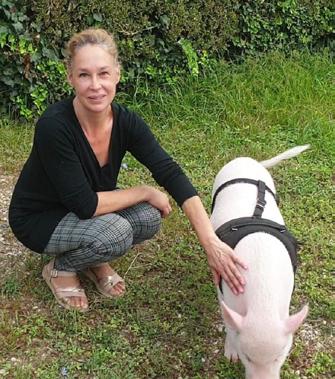
Giulia Milizia nominates one Italian woman who are also popular content creators.
Silvia Goggi, is a doctor specialising in nutritional science with a focus on vegetarian and vegan diets. Her ultra-scientific approach objectively illustrates how our daily food choices have a direct impact on the environment. I love her empathetic approach to dealing with difficult topics in environmentalism and animal welfare.

Doctor Silvia Goggi is so passionate about her work that it has become her mission. She began to communicate on social media, wrote three books in three years, and founded the PlantBased Clinic.

28 VIVA VOCE THE VOICES OF OUR READERS
GIULIA MILIZIA Executive Producer and Cofounder of Colour Analysis Studio
FEDERICO PUZZO Supply Chain Professional
Segmento Issue XXXI • Jun - Aug 2023
Segmento asks its readers to tell us about an Italian whose work or initiatives are environment, nature, or animal oriented.
Stella Orlando nominates Charlie and Anna, a young couple who own a Bed&Breakfast in the province of Vicenza, and are active in creating a better world for animals.
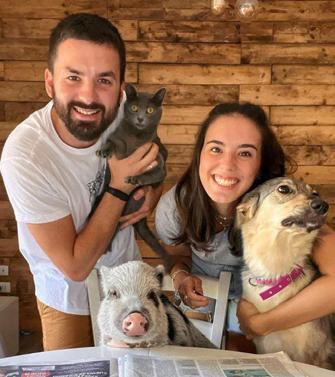
Charlie and Anna from Angolo di Paradiso
Family Agriturismo are my favourite Italians who commit every day to creating a better world for farmed animals. This young couple from Vicenza (Veneto) has made their passion for animals and nature a true lifestyle, and I really adore them!
Their story started with a little Vietnamese piglet called Pumbino, who was affected by a genetic disease. Plant-based menus result in the memory of the piglet that stole their hearts, the couple created a sanctuary called “Oasi Pumbino.” This is a forever home for abandoned and abused animals where they can find peace and happiness.
Francesca Lavagna talks about an important initiative in her hometown of Novara to raise awareness about the importance of every daily action to make a positive impact on the planet.


Rather than a person, I would like to talk about an Italian association, Essere Animali , which is committed to protecting animals and the environment through educational initiatives and political actions to empower people.
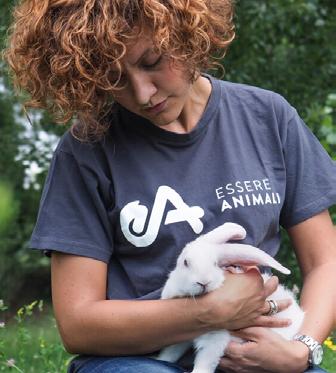
They recently launched the “MensePerIlClima” campaign, creating plant-based menus for universities.
These result in saving resources, like water and land, with an approximately 75% reduction in greenhouse gas emissions compared to meatbased menus.
VivaVoce
Italian teacher and author
29
FRANCESCA LAVAGNA
STELLA ORLANDO Teacher of Italian
Segmento Issue XXXI • Jun - Aug 2023
 Earrings by Chiara Jewellery, necklace by Bini Gallery
Bini Jewellery is available from Gertie Gallery, 247 Gertrude Street, Fitzroy VIC 3065, Australia.
bini_gallery
Earrings by Chiara Jewellery, necklace by Bini Gallery
Bini Jewellery is available from Gertie Gallery, 247 Gertrude Street, Fitzroy VIC 3065, Australia.
bini_gallery
FROM JUNK TO JEWELRY ITALIAN DESIGNERS EMBRACE UPCYCLING FOR SUSTAINABILITY
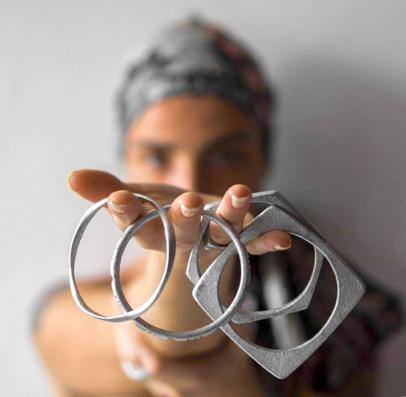 by Lorenza Bini | Images provided by Lorenza Bini
by Lorenza Bini | Images provided by Lorenza Bini
With creativity, skill, and an eye for opportunity, these jewelry designers put environmental sustainability and social responsibility at the core of their design philosophy.
Upcycling is the order of the day in sustainable fashion. The drive to creatively reuse old items has also come to the gilded world of jewelry and bijouterie. Unfortunately, because it relies on mining, the environmental and social impact of the jewelry industry on the world is significant. That is why, thanks to their creativity, some visionary jewelry designers can see the potential in objects that get forgotten or thrown away. They transform “junk” into little treasures and give it a second life.
But how do they combine quality, design, and sustainability?
For some innovators, transforming discarded materials into necklaces, bracelets, and earrings is an exciting and rewarding challenge. Upcycling is a growing trend, and many creatives are starting to seriously value recovered materials of all kinds. One of the most original and ethical producers is Nowar Factory. The company makes jewelry out of aluminum from unexploded ordnance left over from the Vietnam War. Gilberto Calzolari recycles broken umbrellas to produce an entire collection, while Maria Sole Ferragamo uses scrap leather and brass. Among the most original is jewelry made from plastic bottles, buttons, pencils, computer components, used bicycle inner tubes, and old vinyl records.
Unexploded ordnance
Nowar Factory’s jewelry is made in Laos by local artisans and is mainly made from aluminum war ordnance left over from the Vietnam War. Laotian artisans make these artifacts using a classic lost wax technique, which uses simple clay molds into which the molten aluminum is poured. The rough pieces are shipped to Italy, where they are finished.
The village of Ban Naphia, where the artisans live, is located a few kilometers from Phonsavan, the capital of the Xieng Khouang region, which was the most affected by the scourge of unexploded ordnance. The region around Phonsavan was hit by devastating American carpet bombings during the Vietnam War. To this day, only a small part has been cleared.
31 FASHION & DESIGN
Segmento Issue XXXI • Jun - Aug 2023
Vinyl records
Elena Valenti’s atelier has been using old vinyl records for years to create stunning jewelry. With the V33 collection, Elena gives new life to vinyl by giving it sinuous shapes and painting or covering it with gold or silver leaf. Each piece of jewelry is unique and catches the eye. It is conceived as wearable music.
The philosophy of the Tuscan company Bejew is to create pieces from recycled and recovered metals, thus avoiding all the environmental and ethical problems related to the extraction of raw materials. Bejew focuses on reusing silver, brass, and bronze alloys. All three materials can be recycled indefinitely without losing their quality. Recycling them to make new jewelry, rather than using virgin metals, significantly reduces greenhouse gas emissions from processing.
beVerage can tabs
Dalaleo produces fashion accessories using aluminum tabs recovered from beverage cans as a base material. These are combined with recycled fabrics and textiles. A simple idea, but executed with such creativity that the aesthetic effect is astounding.


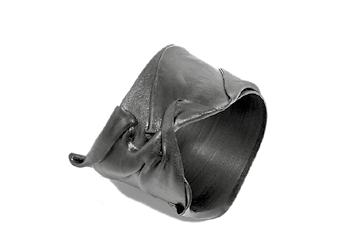
Waste leather and brass
A love for experimenting with shapes and materials has inspired the So-Le Studio project in Milan, which transforms waste materials, mainly leather and brass, into wearable amulets and sculptures. The line is the brainchild of young Maria Sole Ferragamo. It embraces the philosophy of sustainable fashion, offering a selection of jewelry that is respectful of nature and ethics.

32 Segmento Issue XXXI • Jun - Aug 2023 FASHION & DESIGN
scrap metal
colored pencils
Maria Cristina Bellucci is a master of creating striking jewelry using common colored pencils as her base material, giving new dignity and life to this widely used everyday object. Using traditional jewelry techniques, the rings, earrings, and bracelets are expertly mounted on silver. They are immediately recognizable because of their distinctive explosion of color.
pet
Aquamadre is the name of the first MagmaLab Project, started in 2014 in Bologna to produce jewelry from recovered polyethylene processed using the eco-artisanal thermoforming technique. Polyethylene terephthalate (PET) is a transparent thermoplastic material that is a ubiquitous part of our daily lives (bottles and containers) and a top cause of pollution and environmental degradation at both the production and disposal phases. Thanks to its structural characteristics, PET is suitable for thermal treatment with non-industrial procedures, making it an ideal material for recycling and reinvention.

Camilla Pietropaoli is a young artisan who makes alternative and eco-chic jewelry in Italy. She recycles used inner tubes and has a passion for detail and a philosophy of creative recovery. She draws inspiration from nature and the perfection of its forms. Giving lightness and refinement to an initially dirty and rough raw material is the key to her work.

In the world of jewelry, sustainability, and social responsibility are becoming increasingly important to designers who want to make a positive impact on the environment and society. Upcycling is a growing trend, and these visionary designers are not only contributing to the circular economy but also promoting ethical and responsible practices in the jewelry industry.

Segmento Issue XXXI • Jun - Aug 2023 33 FASHION & DESIGN
bicycle inner tUbes
ETTORE SOTTSASS THE INFLUENCE OF A PLAYFUL DESIGNER
 by Alexine Sammut
by Alexine Sammut
Ettore Sottsass’ influence on architecture can be seen globally. He also left his mark on design more broadly, and his work continues to inspire and influence contemporary creators today.
to use color, patterns, provocative shapes, and materials such as plastics and polycarbonates in architecture. His work also showed that he was aware of the role and importance that design plays in people’s lives. He gathered inspiration from international and everyday contexts and implemented or imported them into his designs, be they artworks or furniture pieces.
Sottsass’ projects shocked and provoked. They are, at first glance, not timeless; their form, shape, and color have a late seventies or eighties aesthetic. Nevertheless, they have recently resurfaced in different contexts, more so in object and interior design than architecture. His work with the Memphis Group, which he cofounded with Designer and Product Developer George Sowden, left a mark on design history. It was an antidote to the design establishment of the time, which was obsessed with minimalism and midcentury modernism, and averse to the bright prints and hues Sottsass loved so much.
Ettore Sottsass was a designer who dared to be different. He challenged traditional notions of design to create playful, expressive works that showcased bold colors, asymmetrical shapes, and eclectic materials. His playful approach and his boldness are what attract me to his work. He was not afraid
There was something profoundly influential about the philosophy Ettore Sottsass embraced. It speaks to the i mportance of including design in everyday life and the necessity of making unique designer objects accessible to people of all backgrounds. His work was multidisciplinary and innovative for his time. His designs challenged technical boundaries, contrasting against the clean, angular aesthetic of the modernist design of the time.
Sottsass and the Memphis Group wanted to break free from the rules that modernism imposed. This rigidity was no
34 Segmento Issue XXXI • Jun - Aug 2023
Memphis Again showcasing iconic 80s designs
FASHION & DESIGN
longer sufficient to satisfy the needs of a changing society. The strict principles of modernism were holding back the experimentation needed to take a fresh look at what design was all about. As George Sowdon says in More is More by Claire Bingham, “You could argue, as with all events that call into question the validity of established ways, that Memphis was the style of dissent.”
Sottsass’ buildings have occasionally been labeled absurd and even hideous at their worst. But at their best, they ushered in a return to the belief in the value of the Gesamtkunstwerk , or total work of art. Sottsass advocated that every aspect of modern life could be elevated to an aesthetic experience.

His bold influence has spread beyond architecture to fashion, furniture, jewelry, and art. Designers have incorporated Sottsass’ style into their creations while staying true to what is uniquely theirs. His signature can be seen in contemporary designs by Karim Rashid, Dior, and Missoni, who have incorporated bold colors and playful forms into their collections.

He was a designer who brought about a paradigm shift in the design world. His playful expression challenged traditional notions of design and paved the way for the more colorful and eclectic. His influence on international architecture cannot be overstated. The buildings and structures inspired by his work testify to his lasting impact on the field. His multidisciplinary approach, use of bold colors, patterns, and textures, and his philosophy that every aspect of modern life can be elevated to an aesthetic experience have inspired generations and will continue to do so for years.
 The ACME House in Maui by Ettore Sottsass
Karim Rashid Symbolik collection
The ACME House in Maui by Ettore Sottsass
Karim Rashid Symbolik collection
Segmento Issue XXXI • Jun - Aug 2023 35 FASHION & DESIGN
The ACME House in Maui by Ettore Sottsass
TIP YOUR HAT TO BORSALINO
THE ITALIAN MANUFACTURER CELEBRATES 166 YEARS OF TRADITION AND INNOVATION
by Federica Mancusi
Over the years, Borsalino hats have been spotted on the heads of royalty, presidents, popes, gangsters, journalists, theater critics, detectives, and cowboys. They are equally appreciated by Hollywood celebrities, dignitaries, and style enthusiasts. What made this fashion luxury brand from Alessandria (a small town in Piedmont) a success is, undoubtedly, the fact that it originated from a brilliant spark of intuition. Founder Giuseppe Borsalino hypothesized that a comfortable and soft felt headpiece would be a perfect option for top hats or flat caps and something in the middle, between an aristocratic and a working-class accessory. Behind the brand’s enduring success is its ability to maintain tradition while interpreting changing fashions. It has also been able to establish a deep, unbreakable bond with both the art world and cinema.
The film industry began its love affair with Borsalino in 1942, with the brimmed hats of Humphrey Bogart and Ingrid Bergman almost touching, like a hint of
a kiss, in the goodbye scene of the movie Casablanca . The expressiveness of the actors’ faces is accentuated by the clever game of shadows created by the shape of the hats. The scene is unforgettable. In 2018, Borsalino introduced The Bogart by Borsalino, a special collection dedicated to the great Hollywood actor.
Many movie stars and directors followed the trend initiated by Casablanca. Jean-Paul Belmondo wore a Borsalino in Breathless (1960), and then again, this time with Alain Delon, in two cult movies–Borsalino (1970) and Borsalino and Co. (1974). Delon greatly admired the Italian brand, and the title was his idea. Borsalino accepted (on the condition that the company logo would appear on the posters), becoming the first Italian luxury brand to give its name to a movie production.

Federico Fellini had a custom Borsalino made for Marcello Mastroianni in the 1963 movie 8 ½ . Robert Redford loved that hat so much he contacted the factory to have an identical one made.
Greta Garbo and Marlene Dietrich were seen in Borsalino hats in some of their movies. Italian director Sergio Leone made Robert De Niro wear several Borsalino hats in Once Upon a Time in America (1984). Paolo Sorrentino’s characters Jep Gambardella (played by Toni Servillo) in The Great Beauty (2013) and Pope John Paul III (John Malkovich) in The New Pope (2020) also sport Borsalino headwear.
Nicole Kidman wore a spectacular widebrimmed model in Baz Luhrmann's
36 Segmento Issue XXXI • Jun - Aug 2023
Tony Servillo wearing a Borsalino hat in The Great Beauty (2013)
As the oldest Italian manufacturer of luxury hats, Borsalino is now rightfully considered the father of the craft. The company has earned the status of quintessential Italian icon in headwear.
FASHION & DESIGN
Australia (2008), and Monica Bellucci flaunted a Borsalino in Diabolik: Ginko Attacks (2022). Among the other famous names devoted to the brand are Elton John, Naomi Campbell, Jennifer Aniston, Johnny Depp, Italian actress Sandra Mondaini (who modeled for Borsalino after WWII), singers Al Bano, Adriano Celentano, and Jovanotti. Even the President of Italy, Sergio Mattarella, is a fan.

In 2023, a short film about the Piedmontese factory, titled Tornando a casa , was released, starring internationally renowned actress Caterina Murino (stunning in her Borsalino both in the movie and at the official presentation of the movie at the Italian Embassy in Paris, of course).
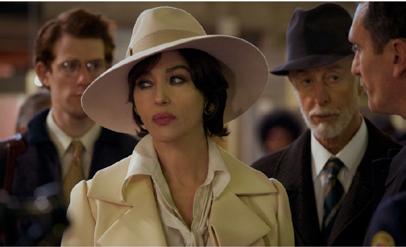
April 4 2023, marked the 166th anniversary of the legendary hat factory. To celebrate the occasion, the Alessandria town council and the Borsalino Foundation officially inaugurated the Borsalino Museum opened in a palazzo bearing the same name in the town. This monumental front building of the former site of the hat factory now houses an extraordinary exhibition of about 2000 pieces of different styles, shapes, and colors, each one with a story to tell. The collection includes several rare cinema relics and headpieces worn by Popes John
XXIII and Benedict XVI.
In 2009, the Triennale Design Museum of Milan hosted an exhibition entitled Serie fuori serie which included the brand as a quintessential Italian icon. Serie fuori serie was replicated in March 2017 in Beijing, China. In 2011 the same museum held another exhibition called Il cinema con il cappello: Borsalino e altre storie. Innovation and tradition are inextricably linked at Borsalino. The luxury brand has collaborated with prominent figures in fashion to create original capsule collections. These big-name collaborations include the likes of Gianni Versace, Krizia, Valentino, Moschino, Italia Independent, Marni, and the “architect of fashion” Gianfranco Ferré. Borsalino also inspired fellow designers to pay tribute to the mythical brand. These included The Chapeau Lamp, designed by Philippe Starck for Flos in 2014, and Moritz Waldemeyer’s 2016 sculpture, The Hatband.
Borsalino’s latest range of baseball caps, bucket hats, and berets targets a younger audience, keeping the company relevant into the future. In addition, it includes the classic legendary felt hats or summery straw Panamas to reach a younger market. The Italian luxury brand has also targeted more women customers, now accounting for half of its revenue.
While Borsalino is a trendsetter and innovator, it has remained faithful to the company’s values and traditional production process. It takes seven weeks to produce a felt model and up to six months for the straw models. The tradition of fine hat-making that has earned Borsellino its fame and VIP clientele has been handed down from generation to generation unchanged in Alessandria.
37 Segmento Issue XXXI • Jun - Aug 2023
Nicole Kidman with her Borsalino hat in the movie Australia (2008)
Monica Bellucci wears the Borsalino hat in the movie Diabolik: Ginko Attacks, 2022
FASHION & DESIGN

PERIPHERAL POETRY A TOUR OF ROME’S MANDRIONE DISTRICT
 by Jesper Storgaard Jensen | Photography by Jesper Storgaard Jensen
by Jesper Storgaard Jensen | Photography by Jesper Storgaard Jensen

Rome’s surprisingly tranquil Mandrione suburb conceals an unusual piece of Roman history. Segmento took a walk along Rome’s most modern aqueduct through a fascinating district far from the Rome your average tourist sees.

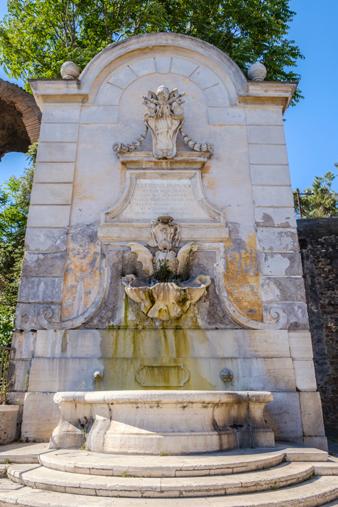
The entrance of Via del Mandrione exudes an air of elegance and historical charm. Upon arriving, you are greeted by the beautiful Clement XII fountain. It emanates an almost royal grandeur. Also known as the Porta Furba fountain, it was commissioned by Pope Sixtus V, who served as pope from 15851590. It was built in conjunction with the nearby Felice Aqueduct, considered Rome’s most “modern” aqueduct.
The water from the aqueduct feeds the monumental fountain, and farmers, pilgrims, local families, and ordinary travelers often stopped here in the past for a refreshing drink or to collect water to take home. In 1733, the fountain was restored on the initiative of Pope Clement XII (1730-1740), the same pope responsible for commissioning the Trevi Fountain. The fountain’s design is thought to be by the well-known architect Luigi Vanvitelli.
39 Segmento Issue XXXI • Jun - Aug 2023
TOURISM & PLACES
The Porta Furba fountain, Via del Mandrione
like a silent refUge
The first time I walked along Via del Mandrione, I felt an immediate sense of well-being. On my left, the nearby Via Tuscolana and its thousands of passing cars seemed strangely distant, probably because the Felice Aqueduct shields the traffic noise. Here, I had the feeling of being transported back in time. On my right, I could look across railway tracks towards Rome’s Casilina neighborhood. Via del Mandrione is like a silent refuge, like a metaphysical state of mind that almost gives you a feeling of weightlessness. The area embraces you, and you ask yourself how best to describe this place. Are we in the city or the countryside, or perhaps both? We are still in Italy’s capital and, at the same time, outside of it. It is enough to think of the neighborhood’s name, Mandrione. It derives from the word mandria, which means flock. This is where the shepherds once brought their sheep to graze. I feel pleasantly “cut off.” At the same time, I constantly feel that there are
only a few hundred meters to go before I risk being sucked into the big-city rush. Walking along Via del Mandrione, you are witness to a small piece of Roman history, where a straight line from the city’s post-war period connects to our present. During the German occupation of Rome, a total of approximately 4,000 bombs were dropped on the city by Allied bombers. In the San Lorenzo district alone, 717 people were killed. Thousands of families who had become homeless began to look for new places to settle down. Many of them found refuge in Mandrione in the shelter of the vaults of the old aqueduct, where it was possible to build makeshift dwellings. This ramshackle settlement became a slum with hygienic conditions unfit for human habitation. From the beginning of the 1950s, the area’s reputation went from bad to worse, with gypsy camps springing up and prostitutes openly plying their trade in the district.

40 Segmento Issue XXXI • Jun - Aug 2023
TOURISM & PLACES
The streets of the area wind along the Felice Aqueduct and cross under it here and there
pasolini’s faVorite neighborhood

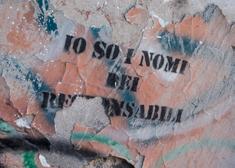
Mandrione was also one of the favorite neighborhoods of author and filmmaker Pier Paolo Pasolini. He was drawn to its decay and found it to be the perfect symbol of post-war Rome from an anthropological point of view, especially when he had to find suitable backdrops for his films. Perhaps Pasolini’s best-known film, Accattone from 1961, was mainly filmed in nearby Pigneto, but certain scenes were also said to have been shot in Mandrione. Despite Pasolini’s reputation as a “slum romantic,” he was not blind to the socially reprehensible conditions in which people lived in Mandrione, which can be clearly seen in his 1958 essay, Vie Nuove, in which he writes:
I once drove by Mandrione with two friends from Bologna. From our car, we saw young children playing in the mud. They ran around as if they were playing a game without rules. They tumbled about as if they were blind in the few square meters where they had been born and raised. When one of the two- or three-year-old boys saw us drive past in our car, he raised his dirty hand to his mouth and blew us a kiss.

Mandrione is specifically mentioned in several literary and cinematic works by Pasolini. He was often photographed walking along Via del Mandrione, talking to residents and children from the neighborhood. While walking along Via del Mandrione, I occasionally come across the inscription “Io so i nomi” (I know the names) on the walls. This is the title of the now famous article, from 1975, in the daily newspaper Corriere della Sera, in which Pasolini revealed that he knew the masterminds of a series of massacres
through the 60s and 70s that had cost hundreds of people their lives. Perhaps this article is part of the enigma of the assassination of Pasolini himself. Eventually, the slum conditions, prostitution, and social decay became impossible to ignore, and the authorities took notice. Critical eyes began to regard Mandrione less indulgently. Psychologist, educator, and social reformer Angelina Linda Zammataro devoted all her attention to cleaning up the area. She worked tenaciously between 1975 and 1984 to improve conditions and get the area’s ragamuffin street children to start regular schooling. In the process, most of Mandrione’s families were moved to better housing in Spineto on the fringes of the city.
41 Segmento Issue XXXI • Jun - Aug 2023
TOURISM & PLACES
The aqueduct and railway tracks
dining at accattone

Today the laid-back atmosphere of the area is intact. I have been walking in the shadow of the aqueduct all this time. I have to reach out to touch it. At a certain point, I once again meet Pasolini, this time in a restaurant named after his film Accattone . I step inside and sit down at a table. It’s Saturday at lunchtime, and the restaurant’s two rooms are half full. Before
I sit down, I notice several old black-andwhite photos from the neighborhood’s less salubrious past.
A bit later, after my pleasant meal of spaghetti all'amatriciana , which was particularly tasty and creamy, cook and owner Fabrizio Santucci takes a seat at my table. He tells me:
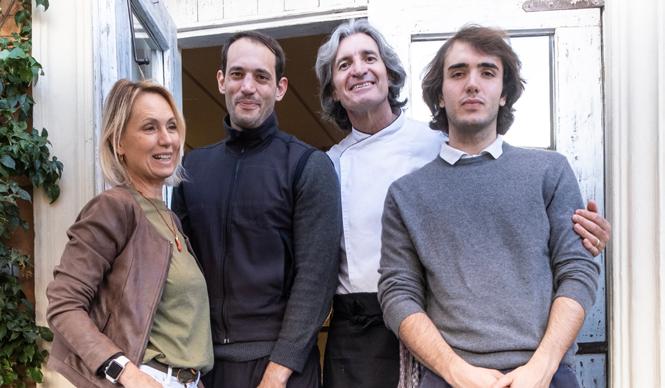
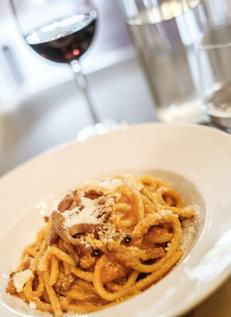
Accattone used to be quite a simple eatery, which most of all had the task of satisfying local stomachs without too many quality delicacies. When I discovered the place, I immediately had a feeling that this was what I was looking for–an isolated location in a neighborhood with a special history. In the past, this area was almost completely deserted, with extensive fields where sheep grazed. In the past, the area was considered the middle of nowhere. Today, here in Mandrione, people live a quiet life. It is a neighborhood rich in spirit and history. People get around on foot or by bicycle. It has a calm pulse.
As I walk about 1.5 km down Via del Mandrione, I reach the end of the road. Here I turn left to enter Via Casilina Vecchia. The aqueduct is now on my right side, very close to me. Despite its antiquity, many local construction companies have used the space under the vaults. As I keep walking along the aqueduct, my sense of being in the middle of a piece of historical and architectural poetry is reinforced. Once again, I have experienced how Rome’s periphery hides both poetry, distinctive history, and quirky anecdotes, which can only be experienced far from the well-trod tourist paths of the city center.
42 Segmento Issue XXXI • Jun - Aug 2023
TOURISM & PLACES
Accattone Restaurant
Fabrizio Santucci, owner of Accattone, and his family
NEGATIVE INFLUENCERS
THE PROBLEM OF OVERTOURISM IN ITALY
by Edoardo Vijge
Millions of tourists flood into Italy every year, making it one of the most visited and photographed countries in the world, but how does the deluge of online posts affect the communities behind the posts?
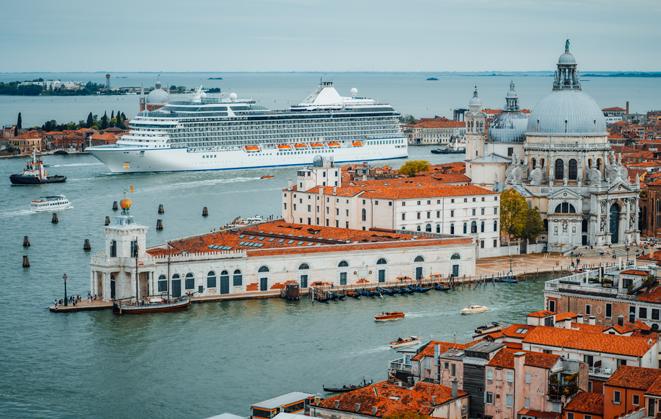
Tourism in the era of social media is all about posts. Sharing a selfie in front of the Trevi Fountain –the same selfie taken by millions of other visitors – has become more important than living in the moment and enjoying the Eternal City. Our holidays have become less about our own experiences and more about how others will view our experiences online. We are bombarded with idealized images of destinations and bombard others in turn. It is important to pause and think about how this mania for online sharing affects not only the quality of our own experience but also the lives of our hosts.
We all love having treasured reminders of our trips and the good times spent with our travel companions, be it an adventure abroad with close friends, a well-earned family vacation, or a romantic getaway. But is the fuss and stress of jostling with thousands of other tourists in the sweltering Roman summer, fingers sticky with melted overpriced gelato, really worth it just to get a photo of yourself sitting on the Spanish Steps? Would a spontaneous snap of you and your mates cycling along the Appian Way in early Spring with the ruins of the Roman aqueduct in the background and a picnic in tow not be better? Does the whole world have to see that snap, or could it just be your own treasured memory?
When you find yourself in the middle of a seething horde at the Rialto Bridge, you understand the point of view of residents who complain about the cruise ships that dwarf the city skyline and vomit thousands of semi-conscious, selfie-snapping tourists
into Piazza San Marco. Perhaps, you think to yourself, I should have come in winter when Venice is shrouded in a ghostly mist and seems to rise like magic from the grey sea like a surreal dream, when you can hear nothing else but the water of a canal gently lapping against a narrow pathway you have wandered down all by yourself to chance upon an intimate moment, a shard in time, perhaps a cormorant diving for fish from a lonely perch half submerged in the turbid lagoon.
The battle between tourists clamoring to visit destinations famed for their beauty and the everyday life of locals in these places is eternal. People operating in the tourism industry are quite happy about the ever-increasing number of visitors, as the frenzy creates more income. More tourism means more jobs which can only be a good thing, especially in a country like Italy with its high unemployment rate. A thriving
43 Segmento Issue XXXI • Jun - Aug 2023
TOURISM & PLACES
A cruise ship entering Canale della Giudecca in Venezia
economy should, in theory, also lead to improved services and infrastructure for tourists and residents alike, but this logic does not always hold true, and infrastructure lags woefully behind the increased pressure on overtouristed cities. On the other hand, locals must contend with increased living costs and skyrocketing rent in these areas. Locals are forced to change their lifestyles as their neighborhoods transform into tourist traps. They may have to stop going to their favorite restaurants or even grocery shops to dodge queues or exorbitant prices. They may even be forced to move out of neighborhoods that become popular with tourists. In other words, some residents only see the damage caused by uncontrolled tourism.
City councils have started to take action. Venice has decreed that cruise ships will no longer be allowed to dock in the historic center and will be limited to the mainland. There is also talk of an entrance fee or ticket for daytrippers to try offset the damage this brand of tourist causes. Nevertheless, more often than not, city councils’ hands are tied by money-hungry institutions or companies who will always find a way to bypass measures.
You should be an independent traveler and avoid becoming part of large eat-and-go tour groups that tend to overcrowd places. Choose to stay longer, and support small businesses, so you do not have to rush and join a tour to see everything in a few hours.
If that’s not doable, you can still, literally, go the extra mile. Does the tourist trap next to the Uffizi Gallery have a neverending queue? I am sure there is a quieter place just around the corner, often offering a better and more reasonably-priced product. Are you fed up with shoulder-
pushing in the narrow alleys of Venice? Take a vaporetto over to Burano, and you will discover amazing canal views with no crowds.
I am not suggesting you have to skip the most famous places entirely. If you want to see Piazza Navona or Piazza di Spagna, wake up early. You will see how beautiful Rome is early in the morning before all the tours arrive, or go for a passeggiata after they leave in the evening as the locals do.
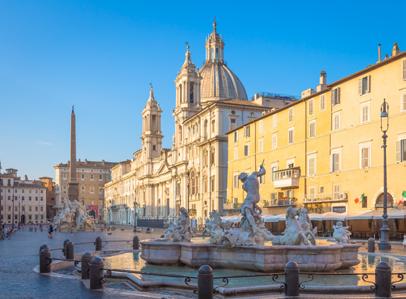
We are sometimes influenced by what we see in magazines or online to get to the photographed places at all costs, ignoring what lies behind the process of getting the shot. Once photographed and publicized, an untouched village, a quiet mountain trail, or an unspoiled beach attracts others. A stream can become a torrent, a torrent can become a flood, and everything that made a place beautiful can be ruined.
Be a smart visitor, support local businesses, don’t eat-and-go, don’t rush from site to site, stay longer, wake up earlier, don’t contribute to the problem of overcrowding by visiting at peak times, look for things to do off the beaten path, think before you share online, and live in the moment. We all have the power to make better choices so that our dream holiday does not become a nightmare for locals.
44 Segmento Issue XXXI • Jun - Aug 2023
TOURISM & PLACES
An empty Piazza Navona at sunrise, Roma
RUGGED ITALY AUTUMN IN LE MARCHE
by Elena Sofia Doria
Few tourists know that Italy is the most biodiverse country in Europe. Breathtaking scenery, rustic charm, and local autumnal fare were the order of the day as we enjoyed an out-ofseason jaunt in the Apennines.
Moving inland from the wild beaches of the Riviera del Conero national park on Le Marche’s Adriatic coast, you pass through alternating fields of sunflowers and olive groves. In the distance, four imposing peaks of the 40 km long limestone massif that forms the spine of the Sibillini National Park begin to dominate the horizon. Straddling the Central Italian Apennines between Umbria and Le Marche, this national park stands out among Italy’s
natural wonders for its rugged beauty. One particularly beautiful approach to the park is a mountain pass between Amandola and the village of Montemonaco–where you can enjoy natural beauty with a side of fine local food and wine as you wind your way up into the mountains.
Sibillini National Park can be enjoyed yearround. Around the village of Castelluccio di Norcia between late May and early June, a springtime event of unmatched

45 Segmento Issue XXXI • Jun - Aug 2023
TOURISM & PLACES
Castelluccio di Norcia. Photo Lorenzo Sgalippa
splendor unfolds as fields of flowering lentils stretching to the horizon burst into a riotous display of color. The flowering season is capped with a festival celebrated on the last Sunday in June in the charming village that becomes an island in a sea of color. This bucolic watercolor world gives way to natural beauty as you climb into the mountains, where secluded glades and meadows bloom with spring wildflowers.
Between the trekking season in summer and the start of the winter sports season, October and November offer a particularly gorgeous spectacle for photographers as the mountains are ablaze with the vibrant yellows and reds of autumn foliage. autumn is also perfect for visiting the

many sanctuaries and churches perched on hilltops and hidden in the woods or the remote villages where the air is thick with the smell of cozy wood fires and roasted chestnuts.
The area’s biodiversity is thanks to the alternation between woods and pastures. The thickly wooded slopes of the foothills give way to sparse mountainous vegetation towards the heights of the park’s four main peaks–the Vettora, Priora, Bove and Sibilla mountains. This highland biome is rich in flowering plant species endemic to the Apennines, like Artemisia Petrosa and the rare Apennine Edelweiss. The mountains are also home to stable populations of roe deer, wolves, wild cats and birds of prey, including golden eagles, peregrine falcons, goshawks, and sparrow hawks. Traces and extremely rare sightings of the critically endangered Marsican brown bear have been noted sporadically over the last twenty years. These are believed to be individuals that wander north from parks further south in the Apennines, where more stable populations are present.
For food lovers, autumn in the Sibillini range offers a rich harvest of chestnuts, mushrooms, truffles, honey, and the famous Sibillini Pink Apple. Visiting a fruiting apple orchard and sampling this local heirloom variety is a seasonal highlight for visitors to the Sibillini mountains. Ciauscolo salame is another delicious speciality of the region. It differs from the classic versions of the cured sausage in that it is spreadable; rather than slicing it, you eat it like a paté. Smoked meats produced in the region are cured in smokehouses powered by wood harvested in the forests of the Sibillini, giving them a distinct aroma that can only be found here. Pecorino is the most
46 Segmento Issue XXXI • Jun - Aug 2023
TOURISM & PLACES
Spring in Castelluccio di Norcia. Photo Lorenzo Sgalippa
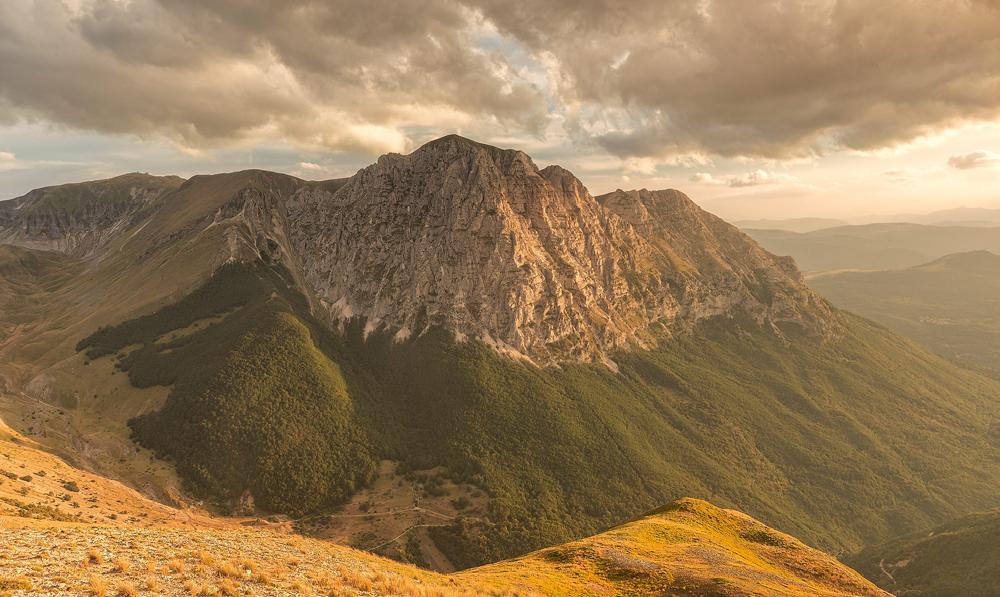

47 Segmento Issue XXXI • Jun - Aug 2023
Monte Bove. Photo Lorenzo Sgalippa
TOURISM & PLACES
Fosso dei Mergani. Photo Lorenzo Sgalippa
common cheese in the Sibillini Mountains, and the local variety is well worth a try. Cow’s milk cheeses are less common, but some farms produce cheeses from cows that spend spring and summer grazing in the pastures of the valleys at the foot of Mount Sibilla, returning in the autumn to spend the winter in cow sheds. As autumn is the hunting season, you can also sample hearty wild boar dishes. But don’t worry; the hunt is carefully managed and necessary to keep these prolific mammals from overbreeding, disturbing the area’s delicate ecosystem, and destroying crops.
The food culture of the Sibillini Mountains has been strongly influenced by its history of playing host to hermit monks. The tradition of producing fragrant, floral mountain honey and beeswax candles to illuminate churches continues today. Another legacy of the monastic tradition in the area are the local liqueurs and distilled spirits flavored with the many

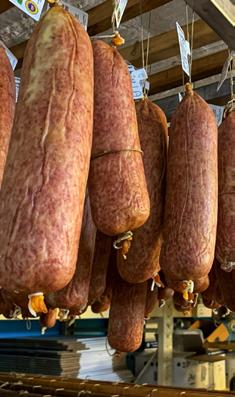

medicinal herbs that grow in the park’s forests, meadows, and mountain slopes. After enjoying a harvest board of local cured meats, cheeses and honey and a stew of wild boar with polenta next to a roaring fire, why not try a dessert flavored with Mistrà, a distillate of green anise, apples, and wild fennel widely used to prepare sweets and biscuits, and cap your meal with a herbal digestive from the Varnelli distillery in Muccia founded in 1868.
There are a million ways to enjoy Italy as a visitor in every season. Traipsing around its historic cities in the middle of summer when their cobbled streets turn them into deadly heat traps and droves of tourists make sightseeing an unpleasant ordeal is probably the least appealing option of all, and yet that is what the vast majority of visitors to Italy choose to do. Why not break the mold and try a Segmento pick for an autumn getaway?
48 Segmento Issue XXXI • Jun - Aug 2023
TOURISM & PLACES
Castelluccio di Norcia Photo Lorenzo Sgalippa
Monterotti Salami
Pink apples of Sibillini Mountains


ANDREA TRANCHERO AND HIS CULINARY TRIUMPHS FROM PIEDMONT TO THE WORLD
by Ambra Dalmasso | Images provided by Andrea Tranchero
From kitchens all over the world, the global ambassador of Italian cuisine Andrea Tranchero has tickled the tastebuds of the likes of Giorgio Armani, Roger Federer, Sir Richard Branson, Giorgio Napolitano. What secret recipe does he possess to have conquered the world? Simplicity.

Chef Andrea Tranchero was born in Cuneo, a city in Piedmont immersed in an area of immense wine and food heritage, the birthplace of many regional delicacies that are prized internationally, and the home of institutions and movements that have marked the history of Italian food culture such as Slow Food. We asked Andrea about the role played by his birthplace in his career as a chef:
Being born in Piedmont certainly gave me an appreciation for excellent raw materials and seasonal ingredients. Fruit, vegetables, and even cheeses all have their best season. At the beginning of my career, I worked in Piedmont, so I learned the tastes of northern cuisine rich in cheese, meat (including game), and fresh pasta, as well as flavorful risottos. After that, I had the chance to work in Calabria and Sardinia, and I was able to deepen my experience of seafood and the flavors and aromas of traditional southern cooking. After gaining experience in Italy, Andrea decided to embark on an overseas experience in Japan. He offered some recollections about his experiences working as a chef in Tokyo. We asked him what that first experience in large, international kitchens taught him:
My first experience abroad was in Japan in distant 1994. I was fascinated by their culture and by how organized they are. In Japan,
I started working for international hotel chains, and I learned that there are several facets to being a chef. There is, of course, the practical part–the cooking–but there is also the managerial aspect and handling local staff.
We were curious to know what challenges were involved in preparing Italian cuisine in Japan and serving it to Japanese diners: I think maintaining a high standard of Italian gastronomy abroad is very challenging because the raw ingredients available taste different and can be very expensive. The Japanese clientele is extremely discerning, especially in Tokyo. Very often, customers have been to Italy and have come to appreciate our
51
CUISINE & FOOD
Segmento Issue XXXI • Jun - Aug 2023
Andrea Tranchero
simple, concise, and flavorful cuisine without, as some of my colleagues say, “too much fussiness.”
After working in Japan for some time, Andrea returned to Italy, where he worked for some highly-rated restaurants. However, he was enticed abroad again by attractive job offers and the excitement of living and working in different countries. His career then took off. He did a second Japanese stint at Giorgio Armani’s flagship Tokyo restaurant, the River Club in Beijing, and the Crown Casino in Perth, from where he crossed the country to become one of the stars of Casa Barilla in Sydney. He was even invited to open a pop-up restaurant at the Australian Open in Melbourne. Now he is based in Singapore as the executive chef and head of Barilla Asia, Africa, and Australia. We asked him, from the summit of this stellar career, to look back and reflect on what
he had learned about himself and Italian food living for so long away from home:

Living outside of Italy, I have learned to appreciate our country differently, perhaps in a more attentive way. I also rediscovered the value of regional Italian cooking and its traditions. At the moment, part of my role at Barilla is to organize events and cooking lessons and to try and link Italian cuisine to the tastes and products available in the countries in our region–Asia, Africa, and Australia. I’ve lived abroad for 25 years, and I think the most important thing is curiosity about other cultures. With all the experience I have gained, I am proud to be considered a global ambassador for Italian cuisine.
Andrea has cooked for thousands of people all over the world, including figures like Giorgio Armani, Richard Branson, Roger Federer, and former Italian President Giorgio Napolitano. As we closed the interview, we were curious to find out what it is like cooking for such famous and distinguished personalities. Andrea chuckled and replied:
It’s not what you might think. People like that often have quite simple tastes and appreciate simple, balanced cooking. Most of the time, they actually ask for a small portion of a simple pasta. Spaghetti cooked al dente with a tomato sauce and finished with a grating of parmigiano reggiano and a drizzle of olive oil. In the three years I managed Casa Barilla, during the Australian Open, before every match, we would prepare spaghetti for Roger Federer.
When he won the tournament in 2018, do you think maybe the chef had something to do with it?
52
CUISINE & FOOD Segmento Issue XXXI • Jun - Aug 2023
QUALITY OF LIFE IN A PIECE OF BREAD
 by Jesper Storgaard Jensen
by Jesper Storgaard Jensen
Recently, Italian bakeries have been on a mission to improve bread quality. Superb raw materials mix with tradition and innovation, and new tasty products are born. Segmento took a mouthwatering tour to five of Rome’s best forni.
In Italy, if someone tells you “sei buono come il pane” (you’re as good as bread), take it as a serious compliment because it means you’re a person with a heart of gold. This, along with around 15 other bread-related metaphors in the language, indicates the centrality of this most basic foodstuff in the Italian imagination. Basic it may be, but breadmaking is a complex and ancient art form with the subtleties of turning three ingredients, water, flour, and yeast, being honed over generations. One of the most enduring symbols of the daily life of ancient Romans is the carbonized loaves of bread baked but never eaten in Pompeii on that fateful day in 79AD. Modern Romans, like their ancestors, take bread very seriously.

Until recently, the panifici or forni of Rome only sold fresh bread to be taken home. However, a revolution is afoot, with many bakeries moving into on-site gastronomy. Some bakeries now have an adjoining café where their freshly baked delights are served all day to carbohydrate-craving customers eager to satisfy their hunger with tramezzini , panini , or pizza al taglio . Some bakeries have even started catering to nocturnal yeastheads by offering aperitivi.
SEGMENTO SAMPLED 4 OF ROME’S BEST BAKERIES
Panella – the pride of Esquilino
The Esquilino neighborhood’s most celebrated bakery is Panella, founded in 1929. “It was my grandfather Pasquale Panella who started the bakery. Then my father Augusto joined, and since 1970 the responsibility has been on my shoulders,” says Maria Grazie Panella, an elegant woman in her 70s. Panella’s traditionalism and elegance can also be seen in the staff’s black and white dress code. Maria Grazia Panella shows me a gigantic bread sculpture of the Colosseum. Talk about bread and circuses! Over the years, Panella has expanded beyond a traditional bakery and has transformed into a café and a small bistro with settings outside where you can enjoy breakfast, lunch, an aperitivo, and even a light evening meal.
Segmento Issue XXXI • Jun - Aug 2023
SEGMENTO SAMPLED 4 OF ROME’S BEST BAKERIES
Pane e TemPesTa – a storm of passion

Pane e Tempesta is one of the few bakeries that has been given the top rating of “three bread rolls” by Gambero Rosso . Here I met Italian-Egyptian baker and owner Omar Abdel Fattah. He greets me with the awards and honorable mentions he has collected since the bakery opened in 2014, framed and displayed proudly on the wall behind him. “I’m constantly on the lookout for raw materials to improve my products. For example, I only use high-quality flour that I source from Sicily and le Marche. Besides, I’m quite lucky with this address, because you’ll find the neighborhood market with fresh vegetables on the other side of the street. Here I know which stands offer the best quality produce for my pizza toppings”. As we sit and talk, a flow of customers enters the bakery to buy slices of pizza for lunch. I get an exotic turmeric bread and a few slices of pizza myself. After my conversation with Omar, the passion and talent that goes into his baked goods are still tangible to the tastebuds.
Bonci – Rome’s bread guru

Many of Rome’s bread lovers consider Gabrielle Bonci – baker and head of the Bonci bakery – to be un genio due to the quality of his products. His bread business started back in 2003 in a tiny room. Innovation and research into the quality of raw materials have always been Bonci’s credo. Last year his takeaway pizza place, Pizzarium, was awarded “Italy’s best,” ahead of several Neapolitan pizza favorites. Today, his bakery in Via Trionfale is one of Rome’s most popular. People often queue up on the pavement outside the shop. In recent years Bonci’s bread has appeared on some restaurant menus in Rome, and his success has led to bakeries opening in Chicago and Miami. His success has recently led to bakeries opening in Chicago and Miami. The Gambero Rosso has recently given him top marks. This puts Bonci in the company of only four other bakeries in Rome. These are places that should be on every carb-friendly bucket list.
Forno conTi – I don’t really care about traditions!
Rome’s Esquilino district, especially around Piazza Vittorio, is buzzing with social and demographic change. Forno Conti is a modern bakery symbolic of this vibey and cosmopolitan neighborhood. The place opened in November 2021, and baker Sergio Conti is a good example of what you can achieve when talent meets courage. “I’m the fourth generation of a family that has always worked with bread. So, tradition has always been very present in our family. However, I wanted to try something new, break with traditions, and start from fresh in terms of interior style and types of bread,” he says. His wife, Germana De Donno, is an interior designer, and she is responsible for the distinctive minimalist style of this chic bakery. In the corner of the shop a girl is working on her laptop. Outside, two staff members are preparing for the lunchtime rush as Sergio arranges slices of freshly-baked pizza, sandwiches, and crusty bread for display. He looks happy in his life as a contemporary Roman baker.
Pane e Tempesta
Via Giovanni de Calvi 23-25
Panificio Bonci



Via Trionfale 36
Pizzarium
Via della Meloria 43
54
Segmento Issue XXX • Jun - Aug 2023 CUISINE & FOOD
PRESERVING A CENTRAL ITALIAN LEGACY LA CUCINA DI ALBERTA
by Isabella Vagnoni | Images provided by Christina Vagnoni
the book, you will find our family’s traditional Easter menu, from appetisers like Good Friday chickpea and potato soup, Easter Sunday lunch including chicken cotolette and lasagne Nonna Alberta’s prayer before eating, the story of our family’s annual tomato sauce day, and other family stories and traditions enrich the experience of the book.
The majority of us preserve our nonnas ’ recipes by writing them down in a notebook that we keep in a kitchen drawer. However, my sister Rebecca, aged 27, from Adelaide, took it a step further by publishing our nonna Alberta’s recipes in a cookbook. The book is entitled La Cucina di Alberta (Alberta’s Kitchen) and is focused on traditional cuisine from central Italy, specifically from Le Marche. The book includes Olive Ascolane or Olive Ripiene (Ascoli Olives or Stuffed Olives), gnocchi, a traditional Easter cake, and fried ricotta ravioli, to name a few.
However, the book is so much more than a cookbook. It highlights the culture and traditions that surround the food. In
Rebecca explained her motivation for writing the book: “As a child, during the school holidays, I would look forward to a cooking day with nonna and my two sisters, Isabella and Christina. We would typically make gnocchi, eat lunch, and then nonna would take us to the park to play and stop to buy us ice cream. This is one of my fondest childhood memories and inspired me to create this cookbook. I want to share my nonna’s recipes with my own family someday,” explains Rebecca.
La Cucina di Alberta features the black and white wedding photos of our nonna and nonno Eolo Vagnoni at their 1963 wedding in Ascoli Piceno, Le Marche, Italy. The pictures capture a bygone era: the men wearing black and white pinstriped suits with black bow ties; the women modestly dressed in blazer dresses; family and friends standing outside the church on their wedding day.
Our nonna Albertina was born in Ascoli Piceno Italy in 1944. Her family home was situated on a farm in the village of Appignano Del Tronto. Albertina was the fourth of five siblings, and her family lived rurally. All the food the
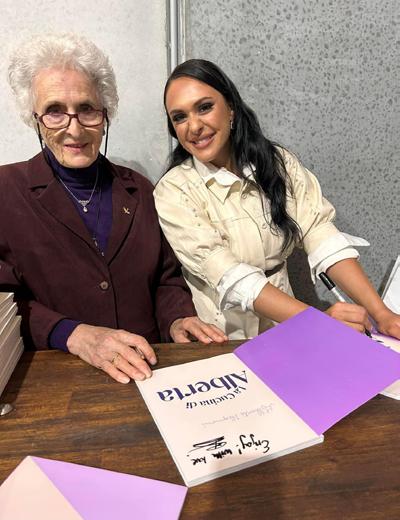

55
CUISINE & FOOD Segmento Issue XXXI • Jun - Aug 2023
Rebecca Vagnoni realised that her nonna’s legacy does not just symbolise delicious Italian food but also the value of family, love, tradition and togetherness.
Rebecca Vagnoni and her nonna Alberta
family ate was organic because they harvested the crops themselves. Eating from the land is a prominent part of Italian food philosophy. Nonna Albertina’s family kept farm animals, including pigs and rabbits, chickens for eggs and sheep to make cheese. As fridges and freezers didn’t exist when nonna was a child, the family used their cantina to preserve food for longer. The cantina is where they kept their homemade wine and also hung cured pork which lasted all year long.
Life on the farm was hard because the family’s livelihood and the food they ate were fully dependent on the crops they were able to grow and sell. There were times of uncertainty when bad weather caused crops to fail, but nonna said her family had no other choice to survive, so they always made do.

There were happy times as well. When nonna was about five, she accidentally got drunk when she came across a bowl of wine unsupervised in the cantina. She also recalls dressing up as characters with her siblings for religious feast days. From ten years old, nonna also made gelato from snow. Her brothers, sisters, and she did this by adding homemade red wine on top of clean snow. Nonna describes how delicious it was.
Nonna met nonno in 1963 when she was 19 in Ascoli Piceno. Nonno was 32 and had already been living in Australia. He came back to Italy to find a bride. They courted for a few months and were soon engaged. Nonno hired a white Fiat 500 to drive around the village. He took nonna shopping to buy the things she needed to move to Australia. Three months later, they were married.

As a couple, they boarded the Marconi Galileo, which took 19 days to sail from Italy to Australia. Nonna was also pregnant with my father Filippo on the journey, and morning sickness combined with sea sickness was not a fun experience for nonna!
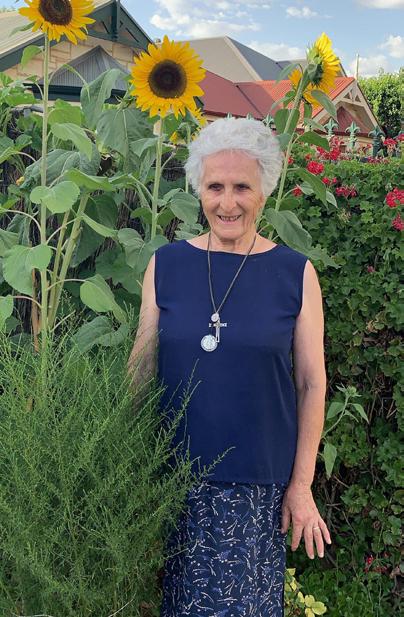
Many years later, one of nonna’s favourite ways to spend time with her grandchildren was to teach us to cook during the school holidays. These are precious memories my sisters and I are grateful for. Rebecca finished by saying that “My hope for this book is to inspire others to cook, bring their family and friends together and hopefully inspire them to preserve their grandparents’ traditions too.”
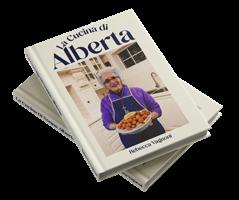
56 Segmento Issue XXXI • Jun - Aug 2023
CUISINE & FOOD
Nonno Eolo and nonna Alberta on their wedding day
Nonna Alberta
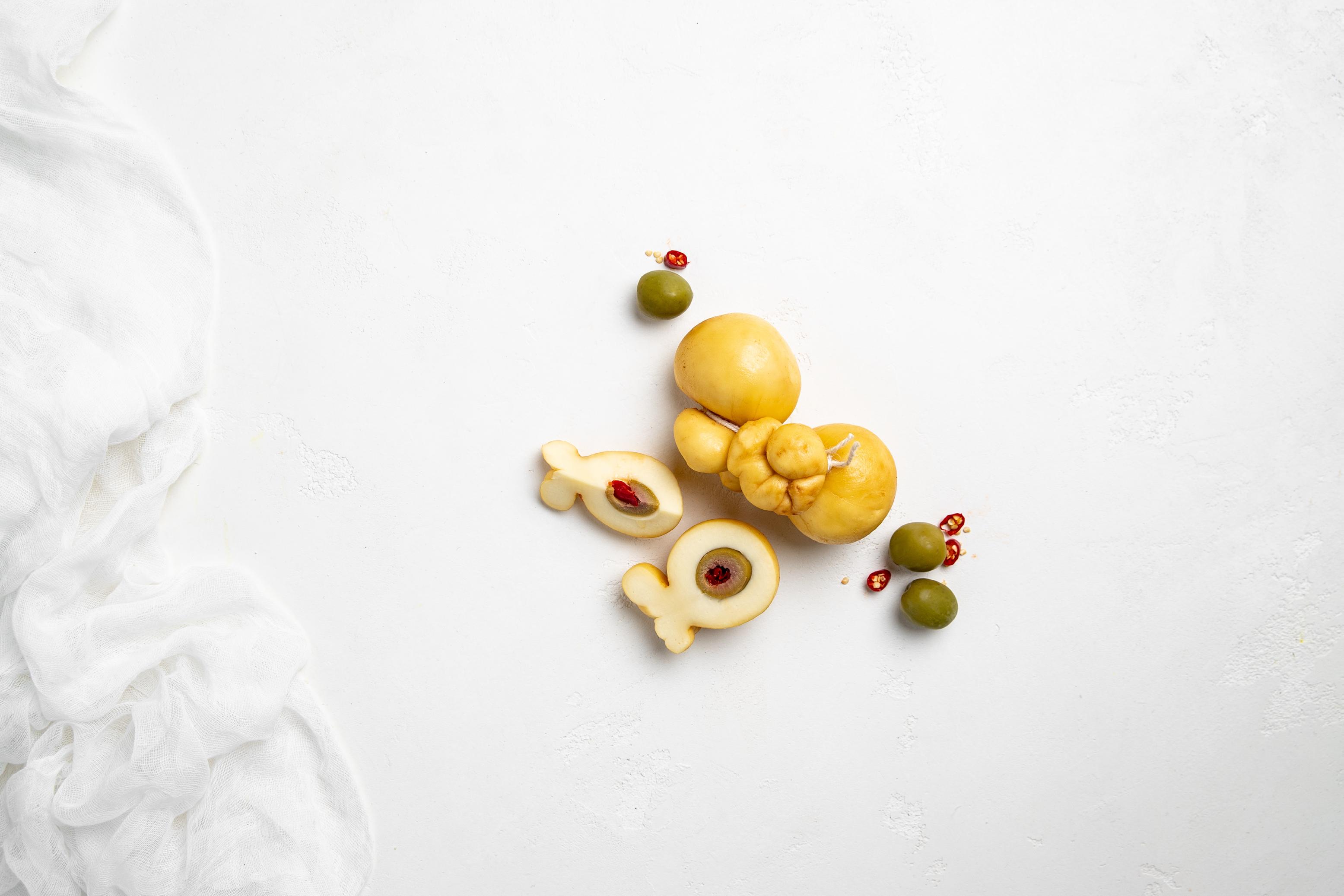

Award winning cheese! thatsamorecheese.com.au @thatsamorecheese
CIAMBOLOTTO Bundcake
Recipes by Alberta Vagnoni

SERVES: 8
PREPARATION TIME: 15 MINUTES
COOKING TIME: 50 MINUTES
INGREDIENTS
3 eggs
¼ cup olive oil
½ cup sugar
2 cups self-raising flour
1 cup milk
2 tablespoons of powdered Cadbury Drinking Chocolate
Olive oil spray
Round cake tin (shape of tin should allow for a hole in the middle of the cake, otherwise place a small glass in the middle of the cake tin to produce a hole in the middle of the cake).

METHOD
Place eggs in bowl, add sugar and beat mixture until sugar is dissolved.
Add self-raising flour, olive oil and milk and stir with a wooden spoon until lumps disappear and texture is smooth.
Preheat oven at 180°C.
Place Cadbury Drinking Chocolate in a large cup or measuring jar and add some of the cake batter (about ½ cup) stir through until chocolate is all mixed in.
Spray cake tin with olive oil and lightly dust tin evenly with some
flour.
Pour half of the batter in cake tin, then place chocolate mixture evenly on top, finally place remaining batter on top making sure to spread evenly.
Place in oven and bake for 50 minutes or until golden brown on top.
TIP
Use this cake batter recipe (minus the chocolate mixture) as a base for other cakes.
58 Segmento Issue XXXI • Jun - Aug 2023
A TAVOLA
THE RECIPES OF OUR CHEFS
RAVIOLI FRITTI CON RICOTTA
Fried Ricotta Ravioli
Recipes by Alberta Vagnoni
SERVES: 4-6
PREPARATION TIME: 15-30 MINUTES
COOKING TIME: 30 MINUTES
INGREDIENTS
FILLING
500 gr Ricotta cheese
2 eggs
1 pinch of cinnamon
1 pinch nutmeg
1 tablespoon lemon rind
1 pinch of salt
PASTRY
4 eggs
Plain flour
Icing sugar
Deep fry in sunflower oil
METHOD
In a bowl mix the eggs and flour, make a soft dough and with a rolling pin make thin sheets.
Mix ricotta, eggs, salt, cinnamon, nutmeg and lemon rind together
Spread the sheet on the table, put one tablespoon of the mixture on the sheet, cover with another sheet. Place a glass upside down and cut the ravioli one by one.
Seal by pressing the edges of the pastry with a fork. It’s important that the pastry doesn’t open when deep frying.

Deep fry in hot oil until golden brown.
Drain the ravioli by placing on an absorbent paper, then put the ravioli in a big dish and sprinkle with icing sugar to serve.
59 Segmento Issue XXXI • Jun - Aug 2023
BUON APPETITO! A Tavola


COSENZA - ITALY MELBOURNE- AUSTRALIA www.stevenshats.com | Australia Ph: 0410 860 036 eMail: info@stevenshats.com stevenshats@gmail.com
THE FIGHT FOR SUSTAINABILITY COMPANIES AND CONSUMERS WORKING TOGETHER
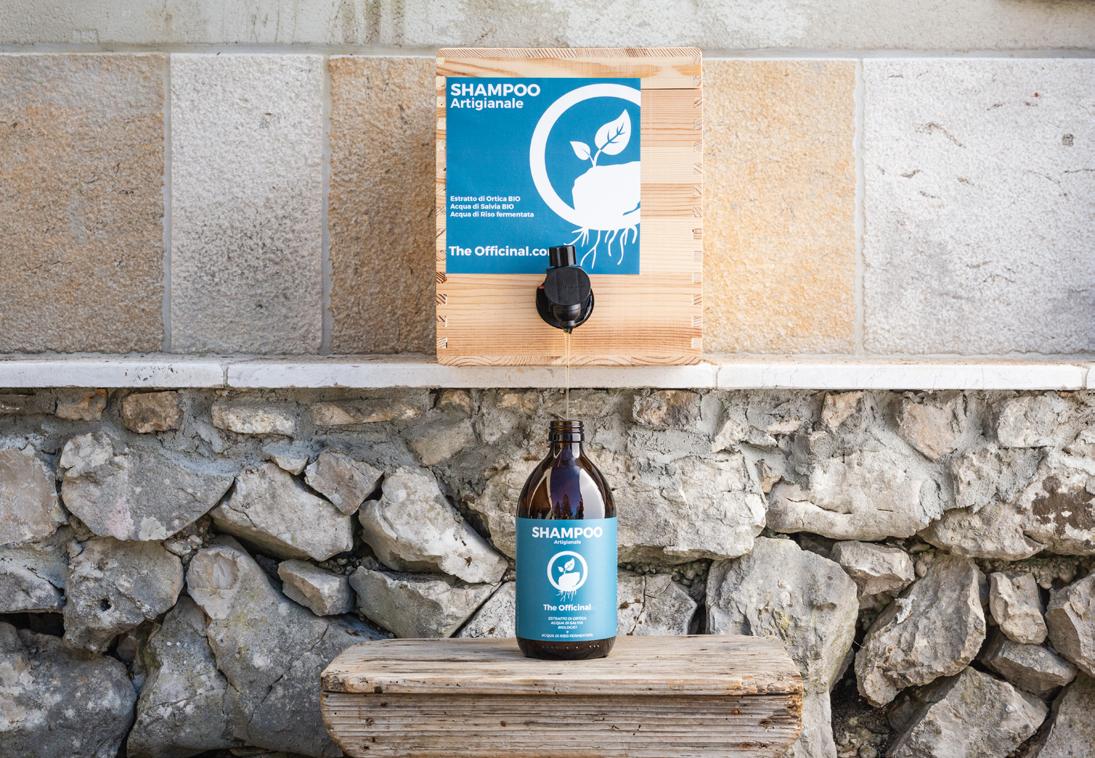 by Vanessa Sammut | Images provided by Stefania Muran
by Vanessa Sammut | Images provided by Stefania Muran
Global climate instability is a complex issue we have grappled with for decades. With bushfires, floods, and other climate disasters regularly dominating the news, concerns around mass extinction have never been more palpable.
With the climate crisis dominating the media comes the realization that collective environmental preservation efforts from communities, businesses, and governments, locally and globally, are crucial if life on our planet is to have a fighting chance.
Governments worldwide are regulating businesses to incentivize sustainable
practices. However, consumers are leading the charge with significant changes to their habits. Motivated to support social causes and limit their climate impact, customers are increasingly choosing brands that align with their values.
Global consulting giant Accenture has done research showing that people are rethinking their core values, cutting
61 Segmento Issue XXXI • Jun - Aug 2023
Providing consumers with the option to refill instead of landfill
BUSINESS & INNOVATION
through the noise, and taking control to effect change themselves while also accepting to live with paradoxical choices for practical and financial reasons.
A heightened awareness of environmental, social, and ethical issues is what led to the inception of The Officinal, a wellness brand offering plant-based products for skincare and haircare. Owner Stefania Muran designs products that help people live healthier, more balanced lives while making choices that support environmental sustainability.

As a mum of two, I’m motivated to set a positive example. That’s why I founded The Officinal, a greenerysurrounded workshop where I can pursue my passions while demonstrating to my daughters that it’s possible to create a job while respecting the environment.
Companies prioritizing sustainability stand a good chance of enhancing brand reputation, improving profitability, and earning customer loyalty, all while preserving our precious planet. However, fighting the good fight has its challenges.
As a micro-business in a market geared towards larger industries, sourcing raw materials and packaging can be a struggle due to limited availability and budget constraints. I’ve had to get comfortable with compromises, but I am committed to going the extra mile to respect nature. Our workshop is solar-powered, and we prioritize high-quality plant-based ingredients that are organic and locally sourced.
Many large brands have placed the green agenda at the core of their value proposition by operating in more environmentally and socially responsible ways. Outdoor apparel company Patagonia has, since the early 90s, endeavored to minimize its environmental impact and support sustainable agriculture and fair labor practices.
As a B Corp and a leader in the sustainable apparel industry, they are also transparent about the challenges they face. Their production and logistics rely on global supply chains, which can have negative environmental consequences. Cognizant
62 Segmento Issue XXXI • Jun - Aug 2023
BUSINESS & INNOVATION
The Officinal's range of low impact cosmetics
of this, they actively measure and assess these repercussions to make informed decisions to reduce their impact and communicate transparently.
The difficulty often lies in conveying environmental preservation efforts and obstacles succinctly and transparently, so mindful customers can distinguish between brands genuinely committed to driving change and ones resorting to greenwashing.
Patagonia, for instance, dedicates over five pages of its website and has PR and marketing teams to communicate the company’s environmental and social responsibility pursuits and the issues they are still working on to improve.
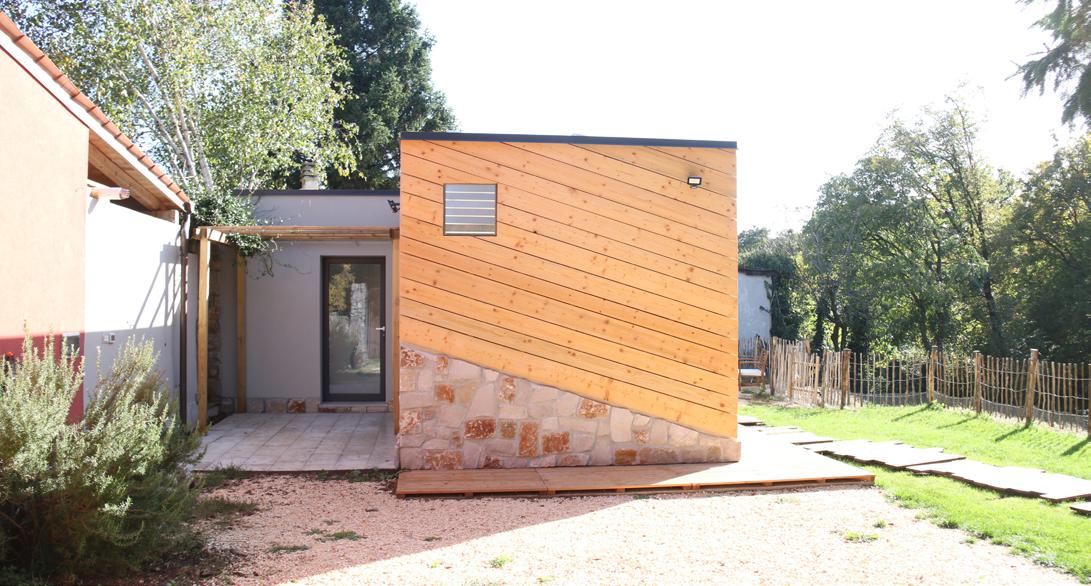
Unfortunately, brands can use wooly phrases such as “responsibly sourced” and “organic” without much oversight.
The onus is, therefore, on the conscious consumer to research the products they buy and use, examine ingredient labels and third-party certifications, learn about their production methods, and vote with their wallet.
Increasingly customers are choosing brands that resonate with their values and care for the environment. Companies that can establish a customer connection thanks to genuinely sustainable practices are well-positioned to build a positive brand reputation, make profits, and keep customers happy while helping the planet. Even small businesses can have a big impact by putting the environment first. The tricky part is standing out for being honest and clear about it so that customers can tell the difference between real change and green spin.

63 Segmento Issue XXXI • Jun - Aug 2023
The Officinal lab
BUSINESS & INNOVATION
THE IMPACT OF THE WAR IN UKRAINE ON THE ITALIAN ECONOMY
by Bruno Mascitelli
The impact of the ongoing war in Ukraine unleashed by the Russian invasion in February 2022 was bound to affect the integrated and mutually reliant economies of Europe and the world. Segmento’s economic correspondent analyzed its effects on Italy.

significantly higher. For natural resourcepoor Italy, more serious for the economy than losing Russia as an export market is the country’s reliance on Russian fossil fuels, which account for 43% of Italian natural gas imports (OECD 2022). High costs borne by households mean there is less money in pockets, and the spike in gas prices affects the whole manufacturing and supply chain, making consumer goods more expensive.
While the center-right coalition government was equivocal in its denunciations of the Russian invasion, Prime Minister Giorgia Meloni and her new government have been very clear about their unreserved support for Ukraine and NATO. This support manifests in bold sanctions on Russia, which have had a disastrous effect on the Italian economy, which was already reeling from the economic repercussions of COVID-19 and drought. The resilience of the Italian economy in the face of such overwhelming odds is in question.
While Russia accounted for only 1.6 percent of Italy’s overall exports in 2021, in certain sectors, the proportion was
Energy-intensive heavy industries like ceramics factories, steel foundries, and paper mills are the backbone of Italy’s manufacturing economy and have been particularly badly hit. In a country that subsists on wheat-based products, particularly serious are soaring grain costs caused by blocked Ukrainian wheat exports and shocks to domestic agriculture caused by fuel prices and last year’s severe drought (a drought slated to continue this year). Generally, price shocks can be passed on to consumers (including through broader inflation). However, these industries will feel the impact immediately and may struggle to pass on the full inflationary impact.
Rampant inflation and infamously stagnant salaries are putting the squeeze on most Italian families, while manufacturers are at their wit’s end trying to make ends meet in the face of out-of-control fuel prices.
64 Segmento Issue XXXI • Jun - Aug 2023
BUSINESS & INNOVATION
Italian Prime Minister Giorgia Meloni during visit to the towns of Bucha and Irpin near Kyiv
As a case in point, the steel mills in San Giorgio di Nogaro on the Adriatic Sea that employ over 1,500 people will soon run out of stocks of metal slabs with little chance of new shipments from traditional suppliers in Mariupol, Ukraine. Equally badly affected is the car industry. Magneti Marelli Automotive Lighting in Tolmezzo near Udine has been forced to lay off 800 of their 930 workers due to production halts caused by Ukrainian wiring no longer being available. On the other side of the equation, orders from Russia have completely stopped for the centuries-old goldsmith district of Arezzo in Tuscany after the price of gold skyrocketed.

On a human level, not many people are aware that in 2021, Ukrainian nationals made up Italy's fifth-largest foreign community (around 236,000 people). Since the outbreak of the war, tens of thousands of people have fled to Italy, and many more will seek refuge in the coming months. According to UN figures, as of November 2022, Italy had taken in
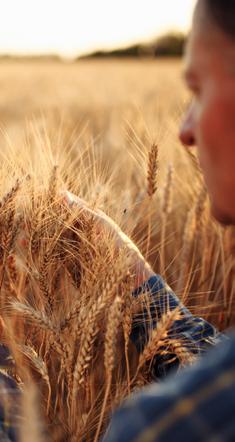
more than 171,000 Ukrainians since the Russian invasion.
In a recent meeting in Rome, the Italian Prime Minister speaking in front of hundreds of representatives of Italian companies affected by the conflict in Ukraine openly supported Ukraine’s entry into the European Union as a way for Italian companies to better respond to the war and its impact on the Italian economy. According to Meloni:
The smartest way to thank Ukrainians for what they are doing is to accelerate their chance of being part of the European institutions. We need to acknowledge Kyiv’s enormous efforts to reform its system and bring it closer to targets required by the EU Commission.
The effects of this war on Italy have been felt at every level. Still recovering from the economic damage of the Covid pandemic, the war in Ukraine has wreaked havoc on the Italian economy and caused Italian living standards to suffer. Not only is Italian GDP expected to take a hit in 2023, but inflation will economically cripple many Italians. Italian businesses and consumers are desperate for hostilities to cease. While our struggles can in no way compare to those of the Ukrainian people on the ground, on the financial level, and thanks to unwavering Italian solidarity with Ukraine and its refugees, their war is our war too.
65 BUSINESS & INNOVATION Segmento Issue XXXI • Jun - Aug 2023
REVOLUTIONISING
ITALIAN
AGRICULTURE A CLOSER LOOK AT AGTECH INNOVATION
by Vanessa Sammut
Investors in Italy have been pouring money into the AgTech sector to improve the quality and sustainability of Italian agricultural products. So what is AgTech, and why is it important for the Italian food industry?
AgTech refers to using cutting-edge technology to improve processes like seed selection, harvesting, and more. Farmers can increase efficiency, reduce waste, and produce healthier, more sustainable crops by harnessing data, automation, and other tools.
Some cool technological advancements are driving the sector in Italy. Precision agriculture techniques like remote sensing,
mapping, drones, and Internet of Things (IoT) sensors are making their mark. Farmers are using these tools to collect data on crops, soil conditions, weather patterns, and other variables to optimize planting, watering, fertilizing, and harvesting.
These new technologies are helping address the agriculture industry’s big challenges, like climate change, food

66 Segmento Issue XXXI • Jun - Aug 2023 BUSINESS & INNOVATION
security, and population growth. By producing food more efficiently, reducing waste and environmental impact, and improving the sustainability of agriculture, farmers can help feed the world while minimizing their environmental impact. Some unique challenges facing the sector in Italy include limited access to funding for small and medium-sized enterprises, regulatory barriers, and a need for digital infrastructure in rural areas. But, Italy’s strong tradition of small-scale farming and diverse agricultural landscapes also provides opportunities for innovation in niche markets, like organic and specialty crops.
So, how are Italian farmers and food producers responding to all this new technology? Some critics argue that these technologies will contribute to the food industry’s industrialization and homogenization and may ultimately lead to the loss of traditional farming practices and cultural heritage, but farmers are generally pretty receptive. Who wouldn’t want to improve productivity, reduce costs, and meet the growing demand for highquality, sustainably produced food? But, there is a need for education and training to make sure farmers can effectively use and benefit from these new tools.
Italy has a long history of agricultural innovation and a strong presence in the global AgTech industry, particularly in
precision farming and biotechnology. Italian companies are well-positioned to compete globally, thanks to their expertise, advanced research and development capabilities, and access to a highly skilled workforce.


67 BUSINESS & INNOVATION Segmento Issue XXXI • Jun - Aug 2023
Of course, there are concerns about the potential environmental and social impact of increased AgTech adoption in Italy, like the use of pesticides and herbicides, loss of biodiversity, and displacement of smallscale farmers. But, with careful planning, regulation, and investment in sustainable agriculture practices, these risks can be mitigated.
There are already plenty of successful AgTech implementations, not just in Italy but also around the world. For example, precision agriculture techniques are being used to optimize grapevine management in vineyards; new drought-resistant wheat varieties are being developed using genetic engineering; and ( IoT) sensors are being used to monitor soil moisture and nutrient levels in crops.
And, AgTech can even help preserve traditional farming practices and cultural heritage. By using precision agriculture techniques, farmers can optimize their production while maintaining the unique qualities of their crops.

So, what's the bottom line? If you're an investor or entrepreneur looking to enter the AgTech market, there’s a growing demand for sustainable, efficient, and innovative agricultural solutions, both in Italy and around the world. Investing in research and development, partnering with farmers and food producers, and leveraging new technologies can create a more resilient and prosperous agricultural sector.
For food producers, this development is an opportunity to lead the way in sustainable and innovative agriculture while preserving the rich cultural heritage that has made Italian food products popular worldwide.

68 Segmento Issue XXXI • Jun - Aug 2023
BUSINESS & INNOVATION
We partner with Industry Leading Technology Providers to create Innovative Solutions
Nixora Group supports Banks and Financial Institutions with improving and excelling in data management, business and risk analytics, and compliance reporting




www.nixoragroup.com.au contact@nixoragroup.com.au
AUTHORISED IMPLEMENTATION PARTNER OF









LOVE. LAUGH. PROTECT.





animals with kids the earth

 Leaving Autumn behind.
Necklaces by Uli Rapp
Leaving Autumn behind.
Necklaces by Uli Rapp
TRANSFIXED AND TRANSFIGURED
THE POWER OF NATURE TO SHIFT OUR PERSPECTIVE
by Christopher Fotheringham | Photography by Peter Brodbeck
Can we still find the space to enjoy our time in nature without suffering the melancholy of impermanence? A Segmento photographer takes us through a joyful dream sequence to explore the possibility.

72 UNDER THE COVER
Segmento Issue XXXI • Jun - Aug 2023
The Beauty of Nature. Bracelet by Elena Valenti, necklace by Olimpia Aveta
This series of images, with their jarring juxtapositions of a natural setting and glamour shots, is a cheeky nod to the incongruity that can exist between our image-obsessed consumer society and the natural world that surrounds us in keeping with the theme of this issue. The photograph chosen for the cover features model Federica Cosino in a red gown walking through a tree-lined dry river bed in the Shire of Murrindindi in rural Victoria as if lost on the way to a gala event. The series was conceived as representing a strange dream with all the uncanny costume changes, chance encounters, and unusual settings we experience in the course of our nocturnal subconscious wanderings.
She poses as if to mirror the branches of the mighty trees surrounding her. The image speaks of our insignificance in the face of nature but our ingenuity in creating things of beauty nonetheless. Her surroundings take her in: the dappled light, the riot of autumn colors, and the rustle of the breeze transport her to a place of primal sensuality. There is a sense of utter peace.
In another image, in an uncanny reversal of Odysseus coming upon the bathing maids, Federica, in her dream, now angelic and smiling beneficently, bathed in white light and dressed in a more natural white gown, comes across a pair of overall-clad rustics raking up the autumn leaves.
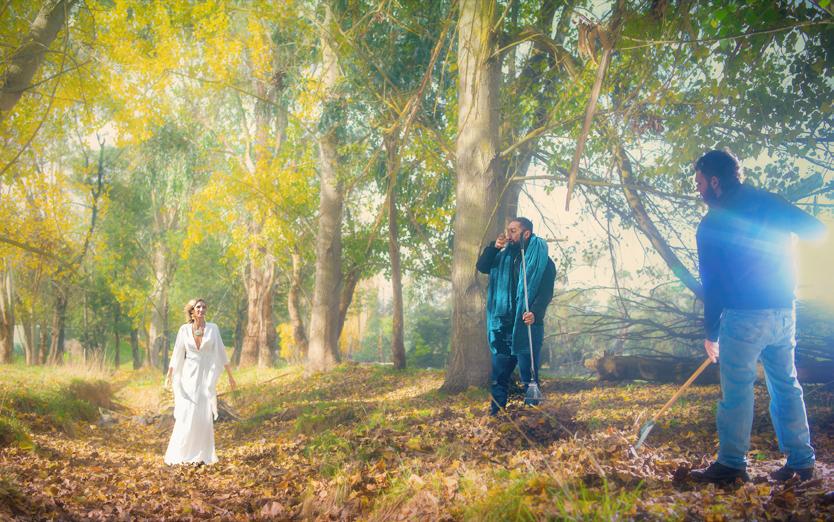
Undercover the 73
Segmento Issue XXXI • Jun - Aug 2023
Photo shoot set preparation
She is then transformed into an idealized country girl with an outfit to match. She eases into the environment and finds a spot to rest in the shade of a majestic gum tree seated on its enormous roots. The final image is her apotheosis. Once again in her angelic form, she makes eye contact with the viewer for the first time, inviting us to join her in her dream as the autumn leaves fall around her, consuming the foreground and presaging a spiritual metamorphosis.

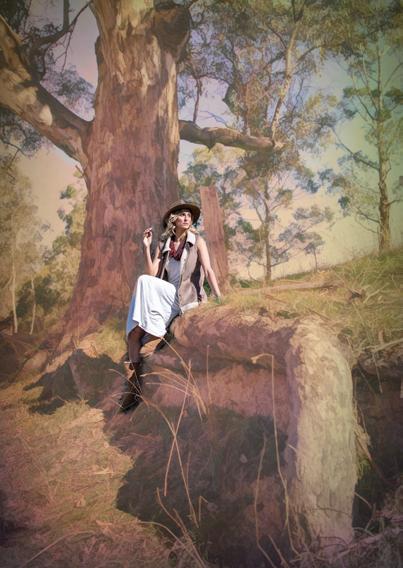
74 Segmento Issue XXXI • Jun - Aug 2023 UNDER THE COVER
All the jewelry Federica wore in the images was supplied by Bini Gallery owner and Segmento contributor Lorenza Bini.
Beauty in the eyes of Nature
Fashionable adventure
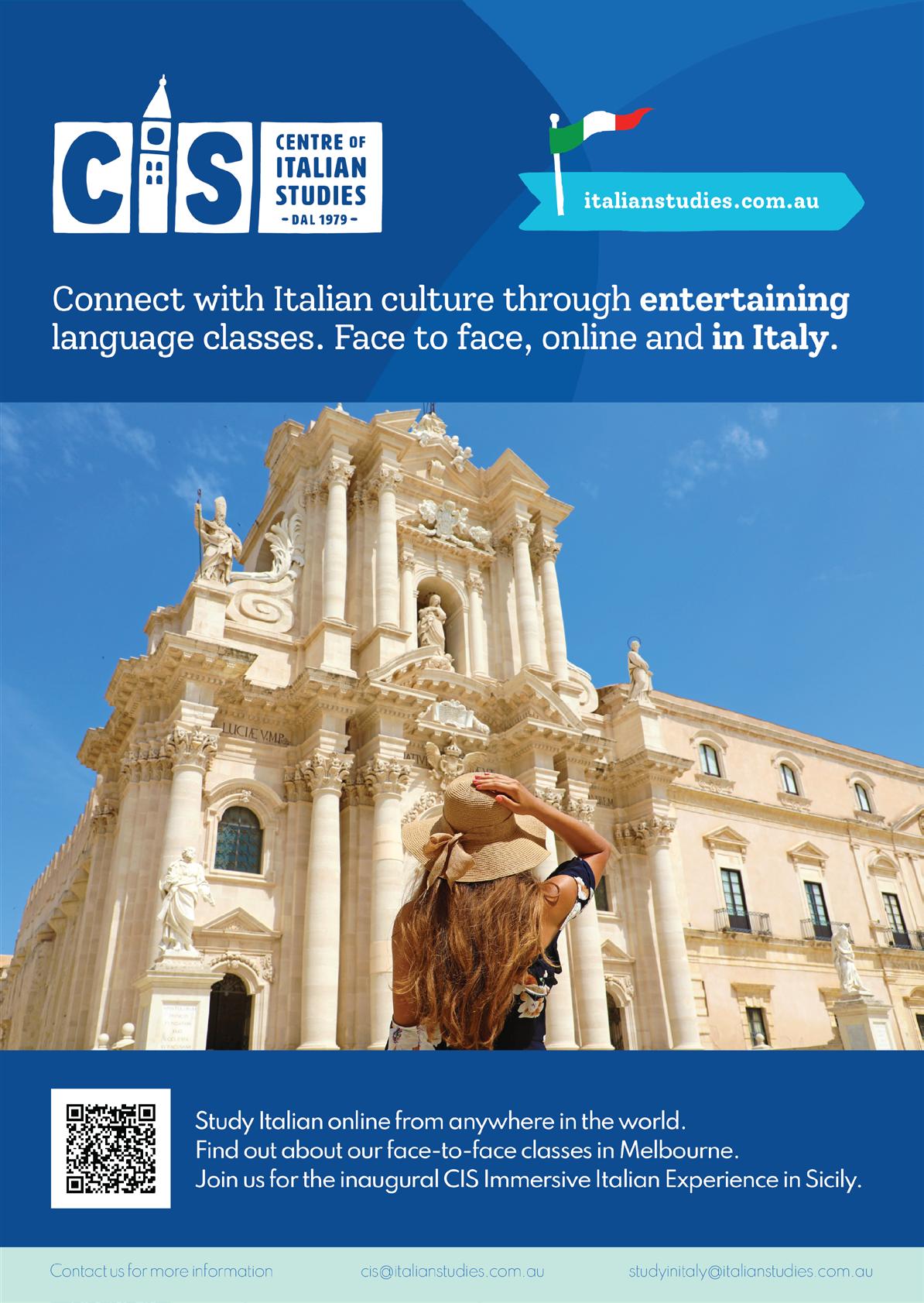






We do we care for “ “ what we do best: our community CO.AS.IT. Italian Assistance Association AGED CARE SERVICES • ITALIAN CLASSES • CULTURAL EVENTS RESOURCE CENTRE • ITALIAN HISTORICAL SOCIETY • MUSEO ITALIANO 189 Faraday Street, Carlton 3053 VIC 03 9349 9000 coasit.com.au coasit@coasit.com.au
IN EACH ISSUE, WE INTRODUCE ONE OF OUR TEAM MEMBERS
FEATURING ISABELLA VAGNONI
Ciao a tutti, my love of writing about Italian culture comes from pride in my Italian heritage. My paternal grandparents come from Le Marche, a region in central Italy famous for olive ripiene (stuffed olive balls). If you haven’t already, try them! Be warned, though – stopping at just one is impossible. I was born and raised in Adelaide, Australia, but moved to Melbourne in 2021 to study for a master’s degree in journalism at the University of Melbourne. I love the course and can’t wait to see where this journey will take me.
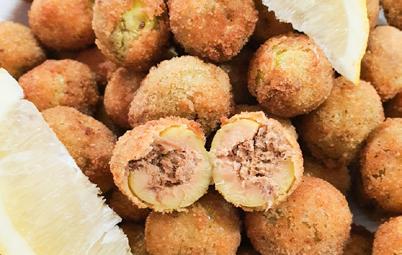
I graduated with a Bachelor of Arts and a Bachelor of Social Sciences from the University of Adelaide. Apart from a strong interest in human rights and social justice, I enjoy documentaries, foreign films, and travel. Having been to Italy twice, I particularly enjoyed wandering the streets of Rome and marveling at the historic architecture.
I’m always excited to write for Segmento and I look forward to sharing all things Italian through my articles.


Unapologetics Meet Our Team
77 the Segmento Issue XXXI • Jun - Aug 2023
Scoperta Alla
Feeling Italian by Maura di
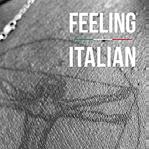 Mauro and Bettina Gehrke
Mauro and Bettina Gehrke
Using the language of photography, this beautiful book delves into multicultural identities and global citizenship. It features a collection of 89 images with personal stories and narratives.
We recommend it because …
The visual narrative recounts the intricacies of Italian identity in the global context. It encourages reflection upon the fluid nature of identity and is a valuable resource for intercultural education and training.
Psyché available from Four Flies Records


Hypnotic, minimalist, psychedelic funk with a wide range of Mediterranean influences, the music of Psyché evokes a mythical past and blends ancient musical traditions with modern genres.

We recommend it because …
With their eclectic medley of musical traditions from diverse folk, jazz, and even Italpop, Psyché transports you on a transcendental journey through space and time around the Mediteranean basin.
The Law According to Lidia Poët Netflix series
A glossy new Netlix series dramatizing the life of Italy’s first female lawyer, Lidia Poët, at the turn of the last century in Turin, The Law According to Lidia Poët is a lush costume drama with a powerful story.

We recommend it because …
The stellar performances and high production values make The Law According to Lidia Poët a must-watch for lovers of history, legal dramas, and stories of inspiring women breaking barriers.
78
DISCOVER MORE ABOUT ITALY AND ALL THINGS ITALIAN
Segmento Issue XXXI • Jun - Aug 2023

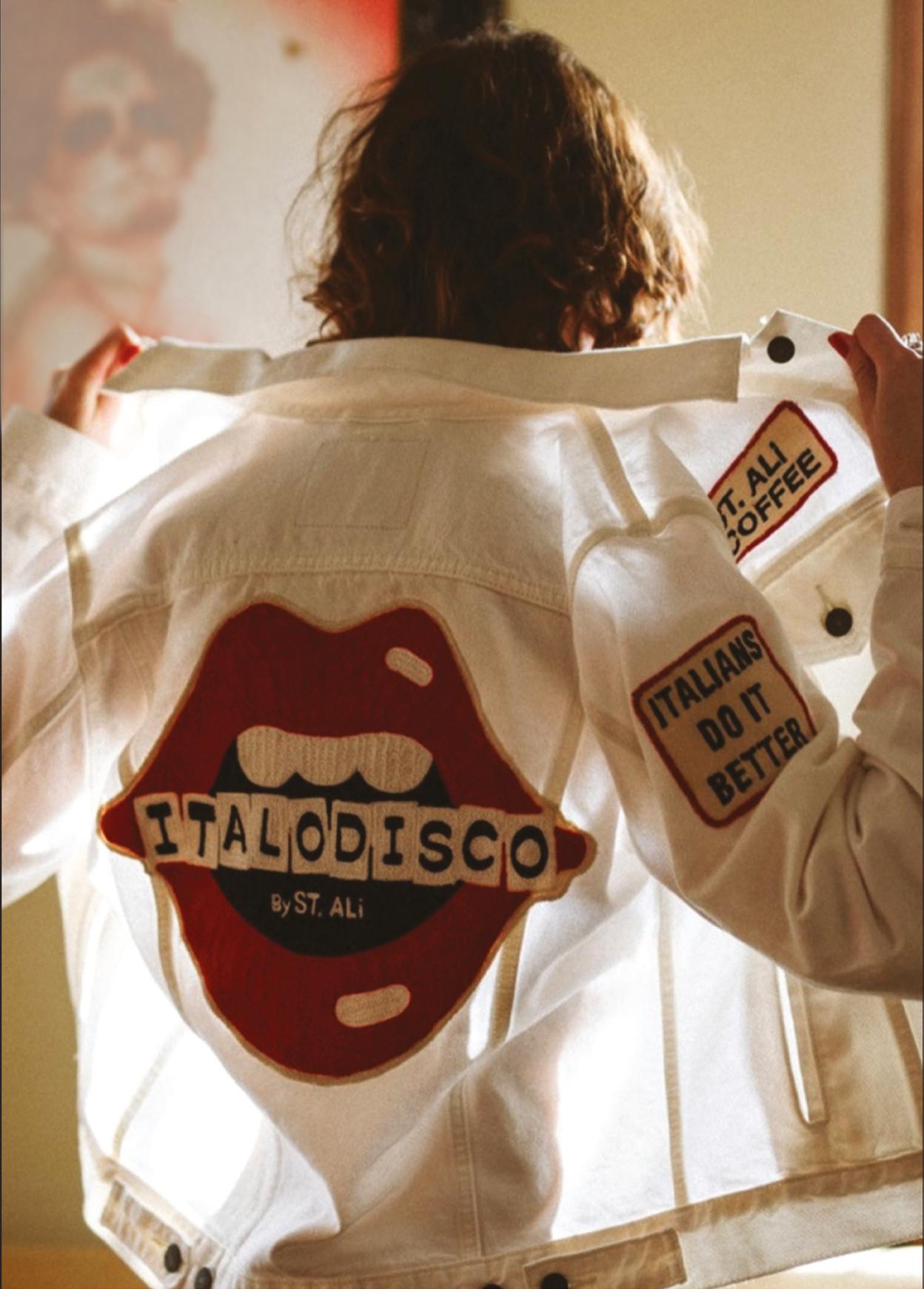











































































 Earrings by Chiara Jewellery, necklace by Bini Gallery
Bini Jewellery is available from Gertie Gallery, 247 Gertrude Street, Fitzroy VIC 3065, Australia.
bini_gallery
Earrings by Chiara Jewellery, necklace by Bini Gallery
Bini Jewellery is available from Gertie Gallery, 247 Gertrude Street, Fitzroy VIC 3065, Australia.
bini_gallery
 by Lorenza Bini | Images provided by Lorenza Bini
by Lorenza Bini | Images provided by Lorenza Bini







 by Alexine Sammut
by Alexine Sammut


 The ACME House in Maui by Ettore Sottsass
Karim Rashid Symbolik collection
The ACME House in Maui by Ettore Sottsass
Karim Rashid Symbolik collection




 by Jesper Storgaard Jensen | Photography by Jesper Storgaard Jensen
by Jesper Storgaard Jensen | Photography by Jesper Storgaard Jensen






















 by Jesper Storgaard Jensen
by Jesper Storgaard Jensen


















 by Vanessa Sammut | Images provided by Stefania Muran
by Vanessa Sammut | Images provided by Stefania Muran

























 Leaving Autumn behind.
Necklaces by Uli Rapp
Leaving Autumn behind.
Necklaces by Uli Rapp










 Mauro and Bettina Gehrke
Mauro and Bettina Gehrke























